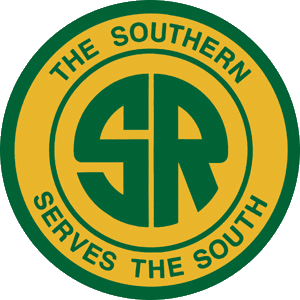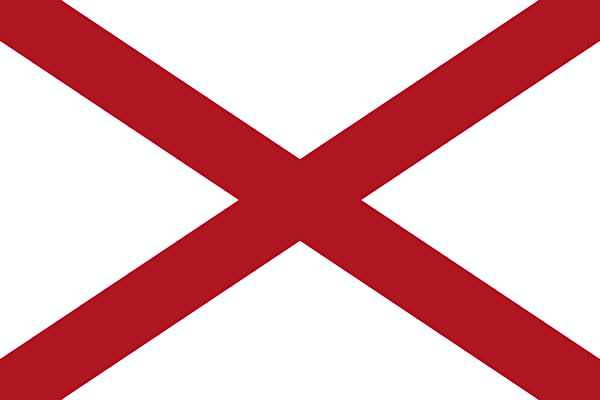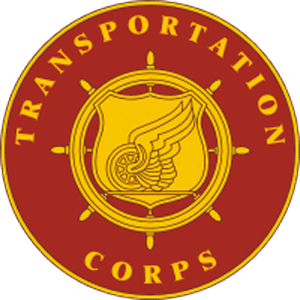
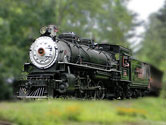








Tuscumbia Depot and Roundhouse
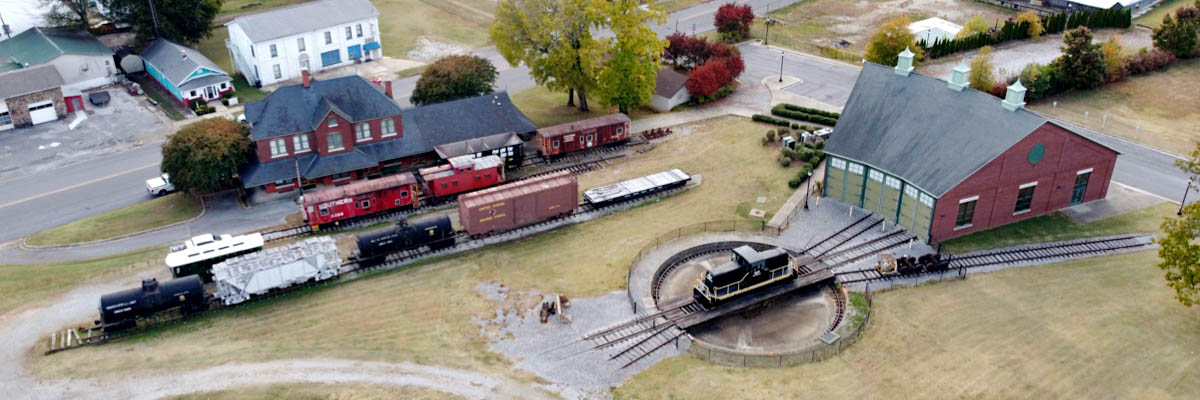
Tuscumbia, Al / Oct 2022 / RWH

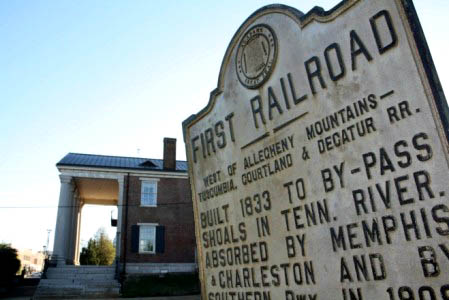
 ested near a bountiful big spring in the foothills of the Appalachian Mountains is the city of Tuscumbia, Alabama. The French first settled the area near the Tennessee River in the 1700’s only to have their town destroyed in 1786. The Chickasaw Indians moved here next, building their town near the spring. They were soon followed by the Michael Dickson Family, circa 1815. The Federal Government built a military road through the town in 1817-1819.
ested near a bountiful big spring in the foothills of the Appalachian Mountains is the city of Tuscumbia, Alabama. The French first settled the area near the Tennessee River in the 1700’s only to have their town destroyed in 1786. The Chickasaw Indians moved here next, building their town near the spring. They were soon followed by the Michael Dickson Family, circa 1815. The Federal Government built a military road through the town in 1817-1819.
The introduction of steamboats on the Tennessee River offered a new opportunity. Tuscumbia built a landing on the river in 1824 just two miles from town. An immense trade business grew and the river landing soon became too small. The merchants decided to build another landing, up river, connected to the town by rail. In 1830, the Tuscumbia Railway Co. was formed. This was the first railroad on the American frontier. The success of this line gave many of these same men another vision – to build another railroad from Tuscumbia to Decatur, Alabama. This was to transverse around a forty-three mile stretch of shallow rapids in the Tennessee River known as the Muscle Shoals. This line, the Tuscumbia, Courtland and Decatur Railroad, was completed in 1834.
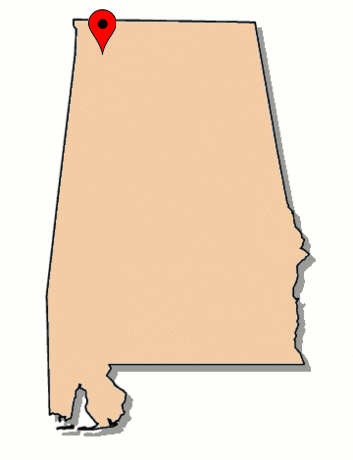
 uscumbia, Alabama, is steeped in southern railroad history. It was a key location on the first railroad built west of the Appalachian Mountains, making the city "America's first frontier railroad town." The Tuscumbia Depot and Roundhouse museum occupies the historic 1888 station passenger station utilized by the Memphis & Charleston Railroad and later the Southern Railway. The city is located on Southern's mainline from Chattanooga to Memphis — still active under Norfolk Southern, but now on a different right-of-way around the city by way of Sheffield. Tuscumbia is the birthplace of Helen Keller, and the depot was often used by Keller and her teacher, Annie Sullivan. Today's museum in the depot features exhibits related to local history, including rail memorabilia, telegraph demonstrations, and a Keller family carriage. A prototypical 3-stall roundhouse and turntable were erected in recent years, and a variety of regional rolling stock is on display on the museum grounds. A model railroad club meets in a nearby facility. The Tuscumbia depot was the inspiration for the Grand Junction Depot erected in the 1980s in the wye at the Tennessee Valley Railway Museum in Chattanooga.
uscumbia, Alabama, is steeped in southern railroad history. It was a key location on the first railroad built west of the Appalachian Mountains, making the city "America's first frontier railroad town." The Tuscumbia Depot and Roundhouse museum occupies the historic 1888 station passenger station utilized by the Memphis & Charleston Railroad and later the Southern Railway. The city is located on Southern's mainline from Chattanooga to Memphis — still active under Norfolk Southern, but now on a different right-of-way around the city by way of Sheffield. Tuscumbia is the birthplace of Helen Keller, and the depot was often used by Keller and her teacher, Annie Sullivan. Today's museum in the depot features exhibits related to local history, including rail memorabilia, telegraph demonstrations, and a Keller family carriage. A prototypical 3-stall roundhouse and turntable were erected in recent years, and a variety of regional rolling stock is on display on the museum grounds. A model railroad club meets in a nearby facility. The Tuscumbia depot was the inspiration for the Grand Junction Depot erected in the 1980s in the wye at the Tennessee Valley Railway Museum in Chattanooga.

Click to see the Tuscumbia Depot and Roundhouse plotted on a Google Maps page

1851 Official Guide ad / collection
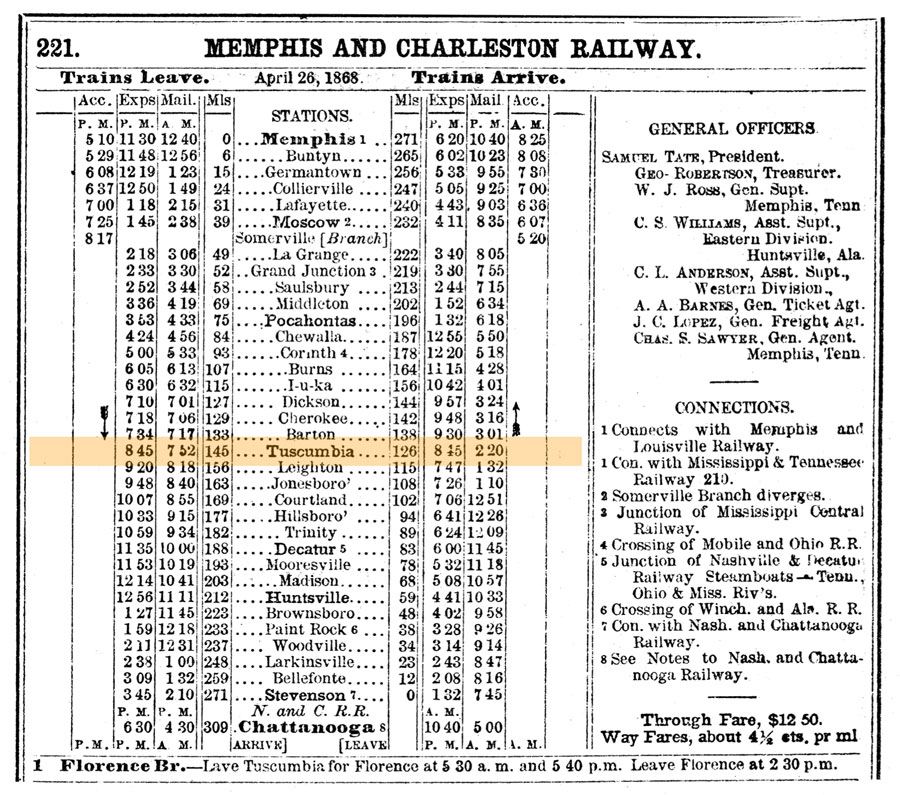
1868 Official Guide ad / collection

collection
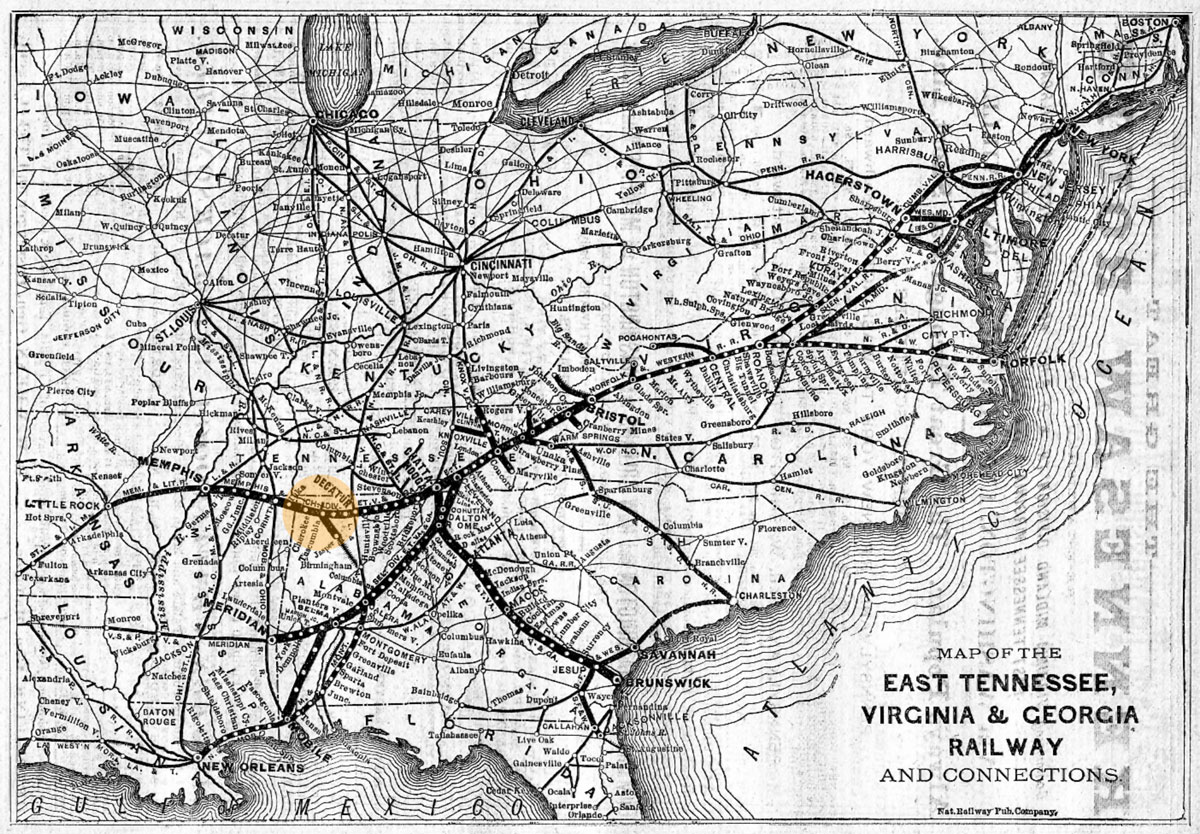
1889 Official Guide map / collection
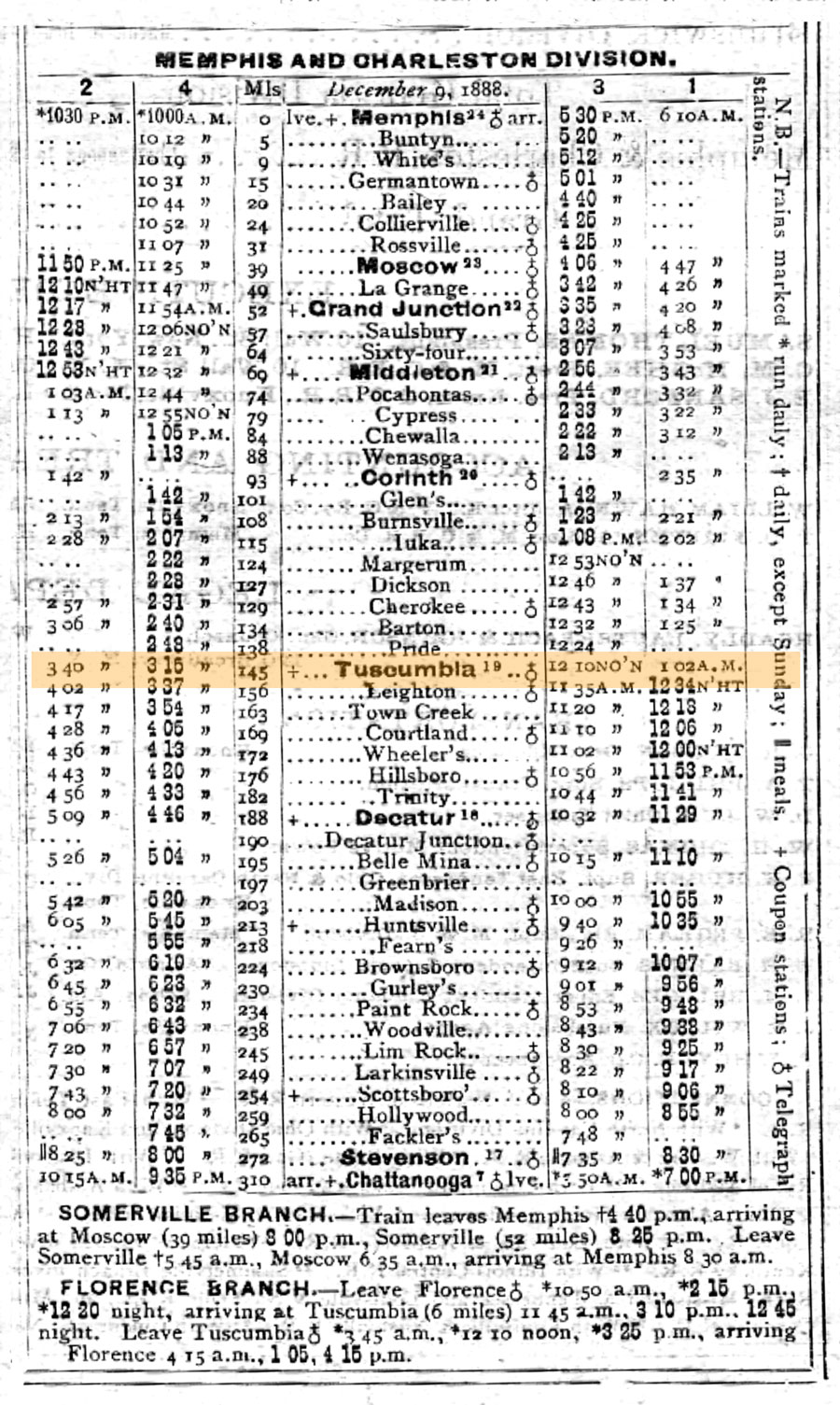
1889 Official Guide ad / collection

1910 Official Guide ad / collection

regional rail map / RWH

RWH
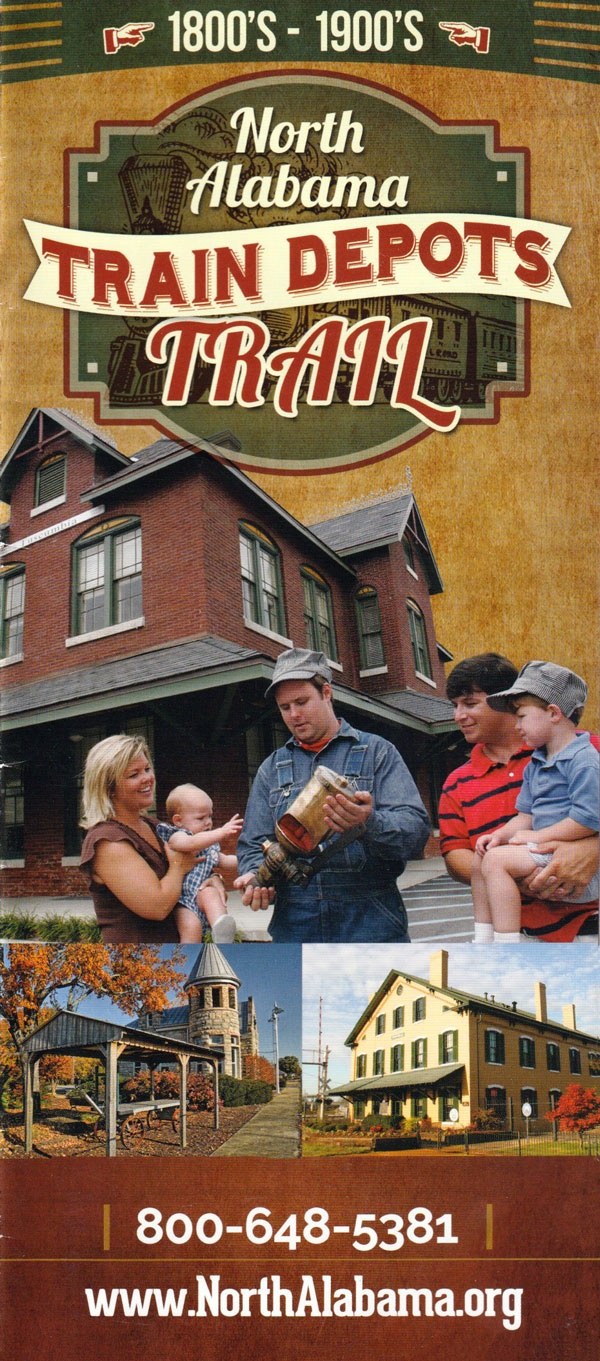

North Alabama Train Depots Trail brochure / collection

North Alabama Train Depots Trail map / collection

See also our other North Alabama depot scrapbooks:
 Depot
Depot
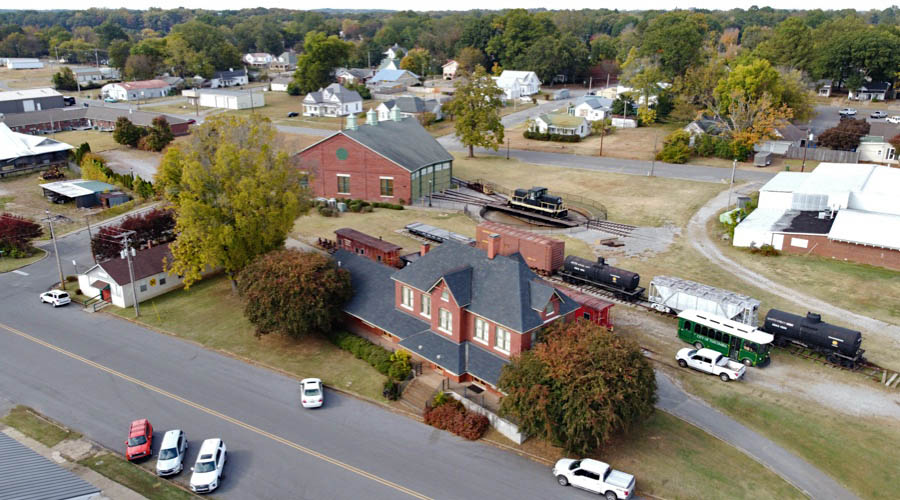
Tuscumbia, Al / Oct 2022 / RWH
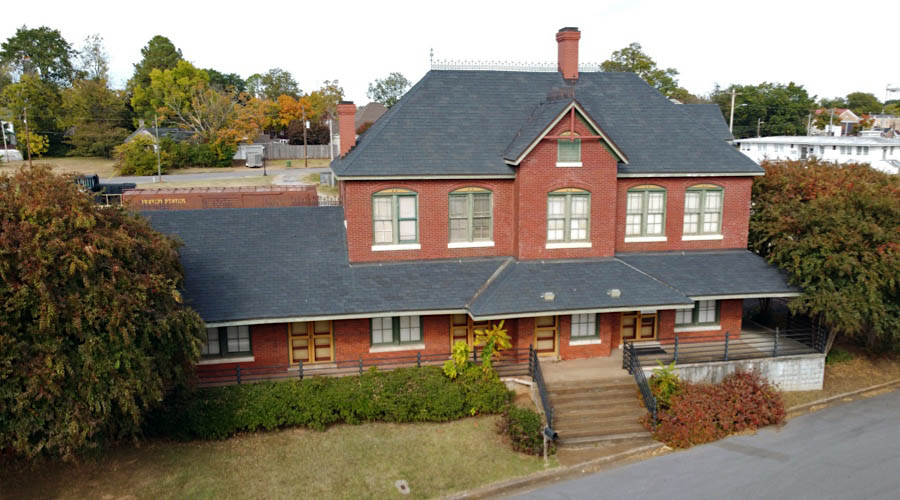
Tuscumbia, Al / Oct 2022 / RWH
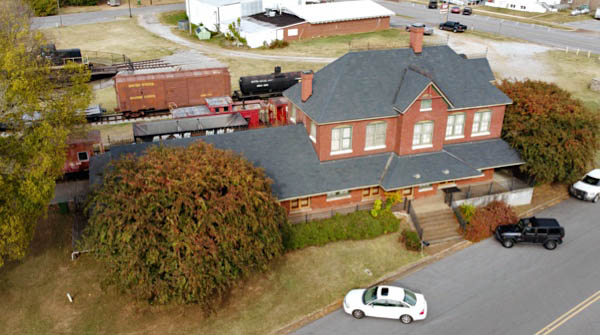
Tuscumbia, Al / Oct 2022 / RWH

Tuscumbia, Al / Oct 2022 / RWH
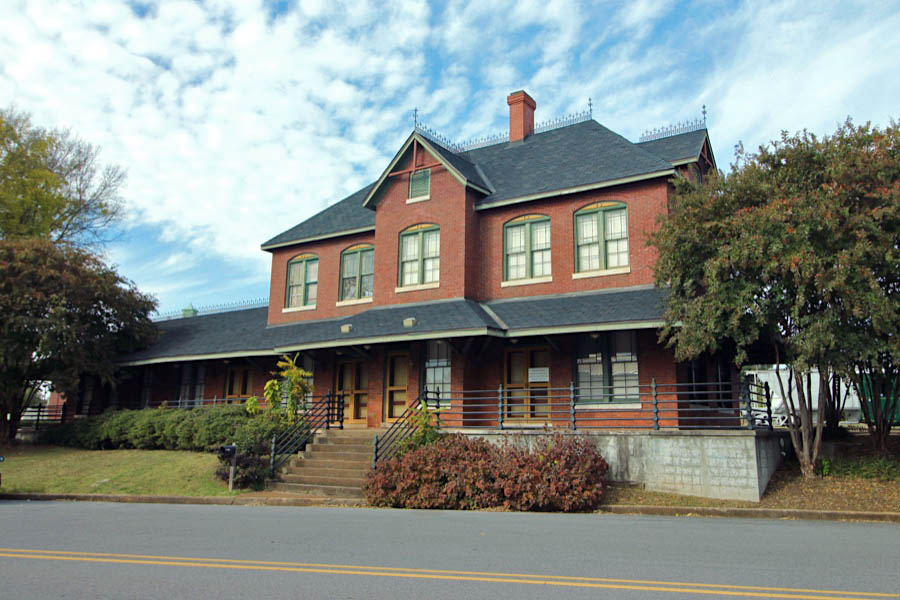
Tuscumbia, Al / Oct 2022 / RWH
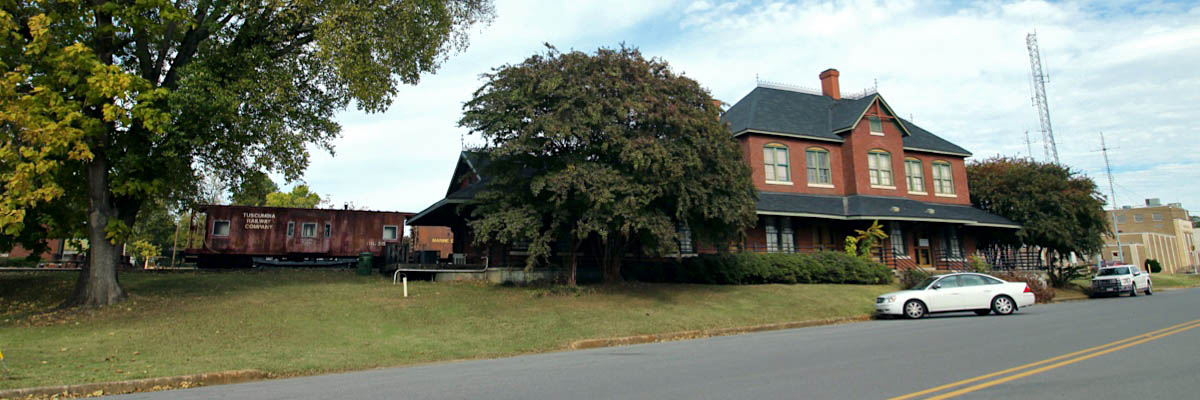
Tuscumbia, Al / Oct 2022 / RWH


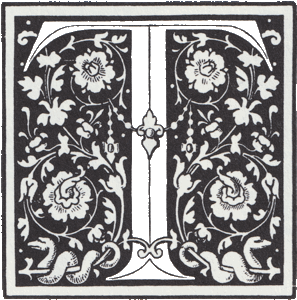 he combination of rail and steamboats put Tuscumbia on the main route from the East to the American Southwest. Tuscumbia doubled in size in just two years. The Tuscumbia post office grew to be one of the most important in the southwest with 41 stage arrivals and departures each week. The telegraph followed much of the same route in the 1840’s and 1850’s. Many of the buildings built during the town growth are still occupied with businesses today, giving Tuscumbia the oldest commercial building district in Alabama. The TC&D Railroad became a major part of the Memphis & Charleston Railroad in the 1850’s. The M&C was a supply line for the Confederacy during the War for Southern Independence, known to Southerners as the ‘WAH’. Union raids along the river and railroad took its toll on the city. It would be over 20 years before Tuscumbia began to grow again from the ashes of war.
he combination of rail and steamboats put Tuscumbia on the main route from the East to the American Southwest. Tuscumbia doubled in size in just two years. The Tuscumbia post office grew to be one of the most important in the southwest with 41 stage arrivals and departures each week. The telegraph followed much of the same route in the 1840’s and 1850’s. Many of the buildings built during the town growth are still occupied with businesses today, giving Tuscumbia the oldest commercial building district in Alabama. The TC&D Railroad became a major part of the Memphis & Charleston Railroad in the 1850’s. The M&C was a supply line for the Confederacy during the War for Southern Independence, known to Southerners as the ‘WAH’. Union raids along the river and railroad took its toll on the city. It would be over 20 years before Tuscumbia began to grow again from the ashes of war.
City of Tuscumbia / image RWH
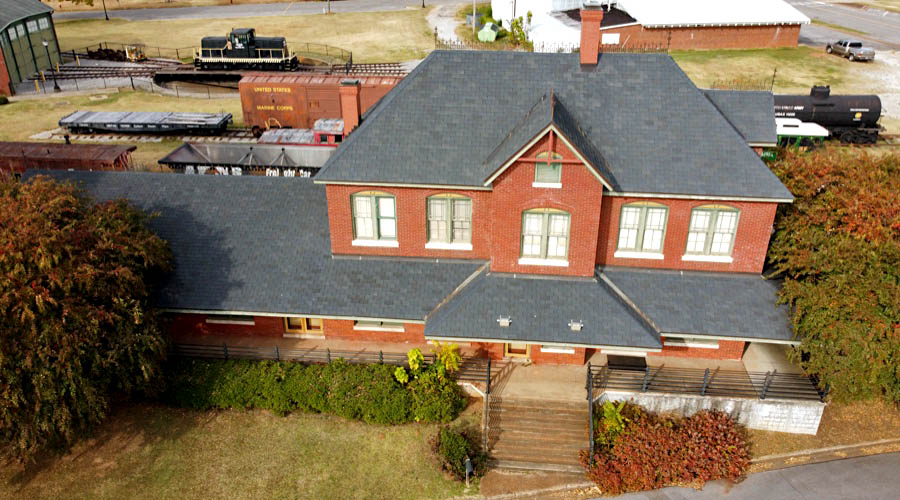
Tuscumbia, Al / Oct 2022 / RWH
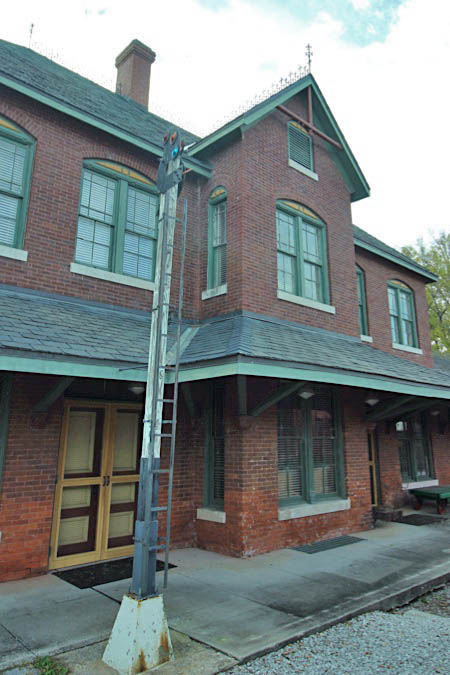
Oct 2022 / RWH

Oct 2022 / RWH

Tuscumbia, Al / Oct 2022 / RWH
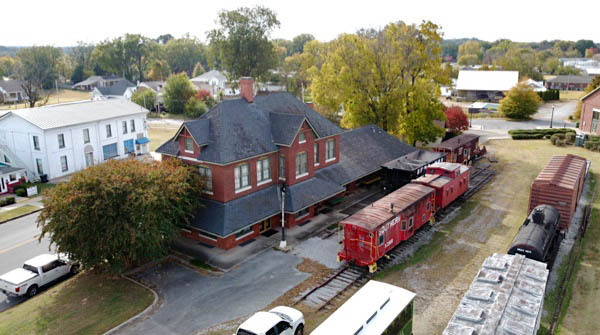
Tuscumbia, Al / Oct 2022 / RWH
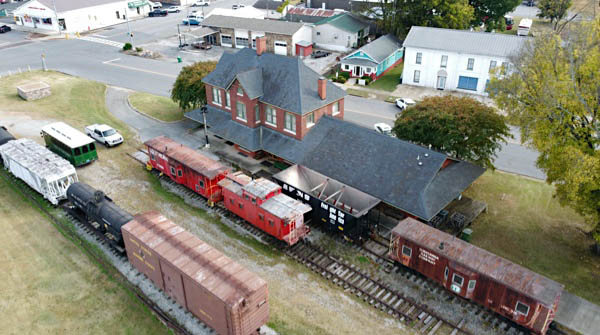
Tuscumbia, Al / Oct 2022 / RWH
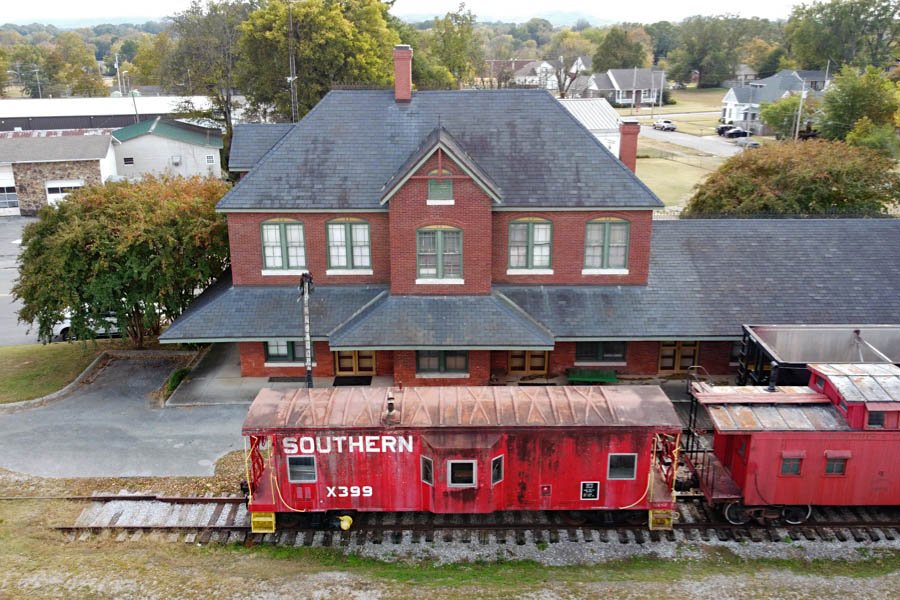
Tuscumbia, Al / Oct 2022 / RWH
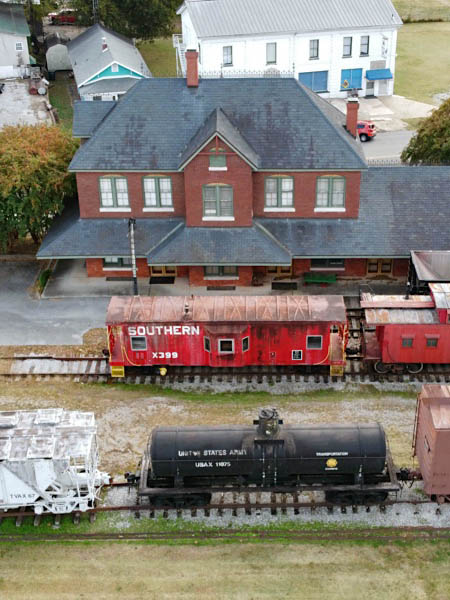
Oct 2022 / RWH
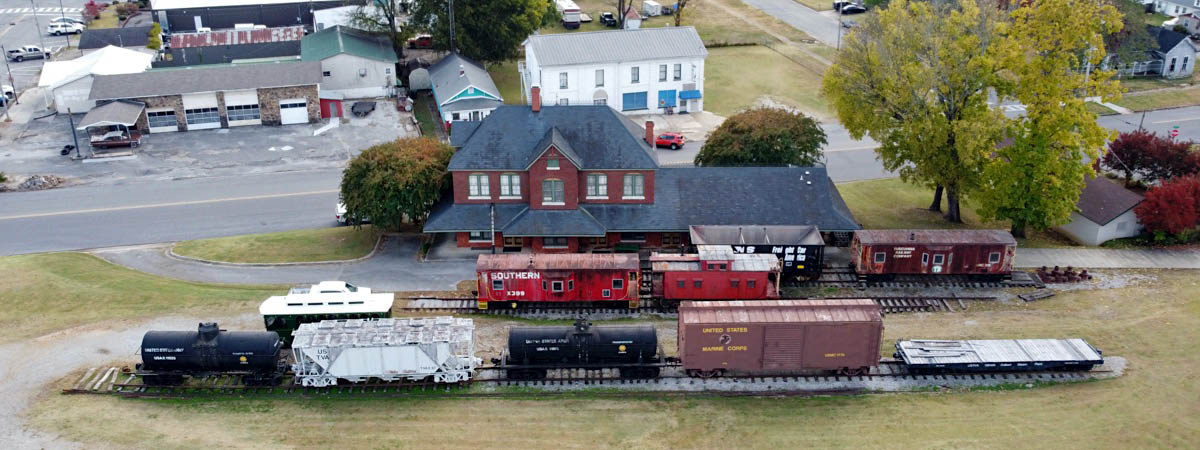
Tuscumbia, Al / Oct 2022 / RWH
 Roundhouse
Roundhouse
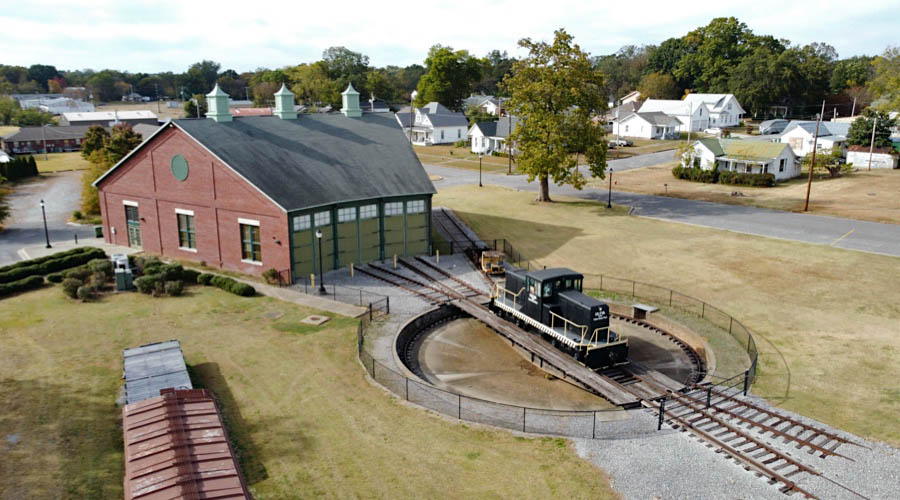
Tuscumbia, Al / Oct 2022 / RWH
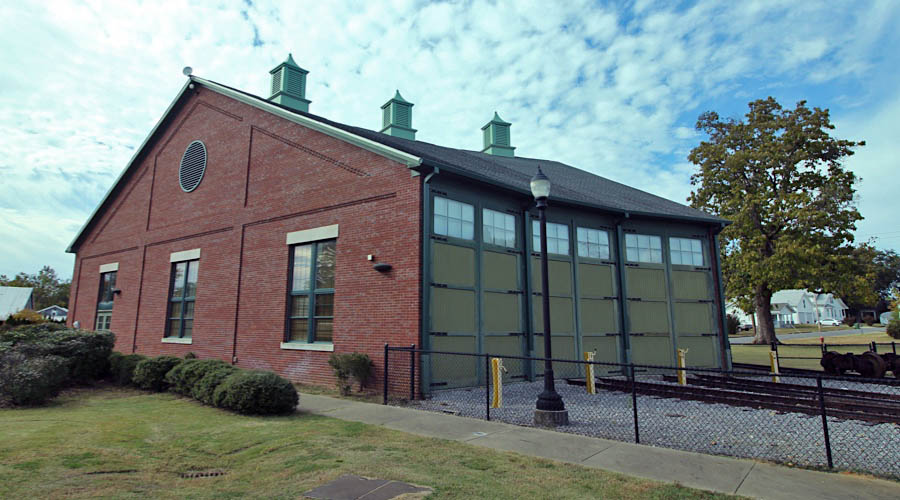
Tuscumbia, Al / Oct 2022 / RWH
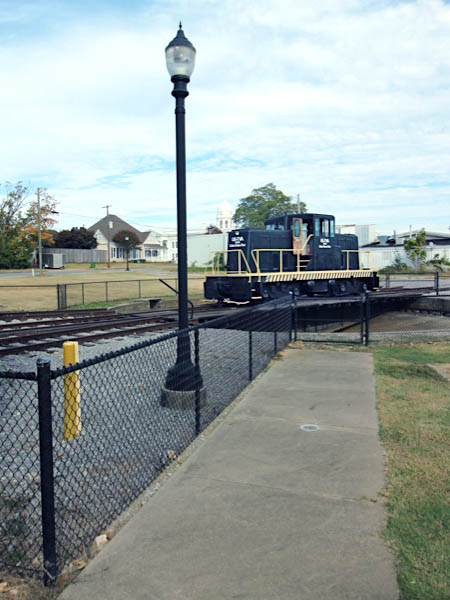
Oct 2022 / RWH
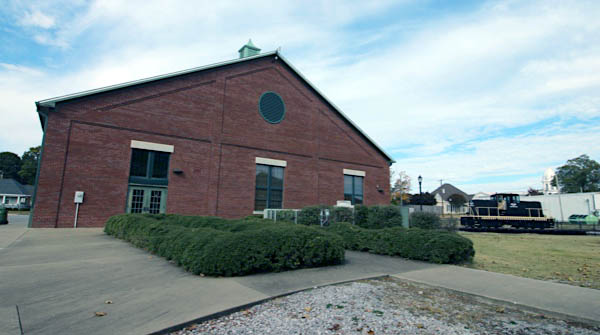
Tuscumbia, Al / Oct 2022 / RWH
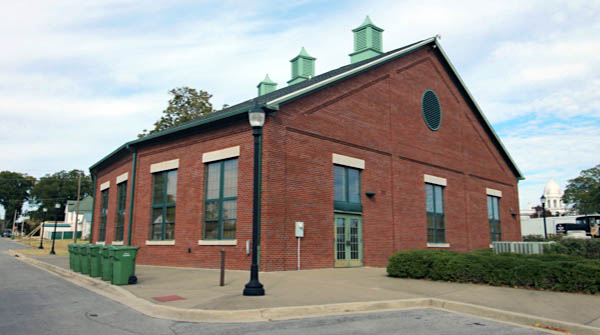
Tuscumbia, Al / Oct 2022 / RWH
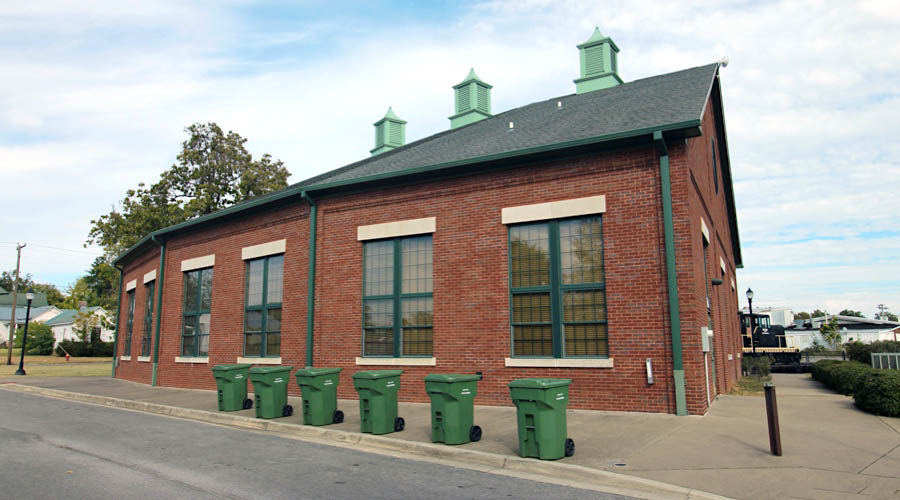
Tuscumbia, Al / Oct 2022 / RWH
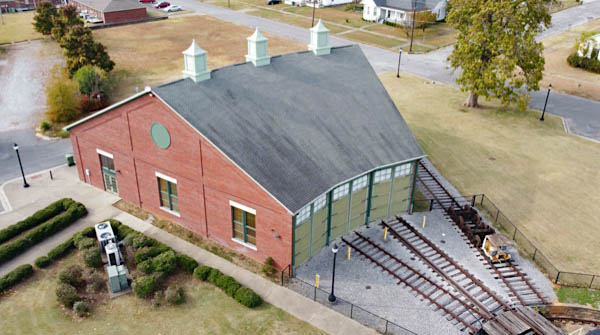
Oct 2022 / RWH
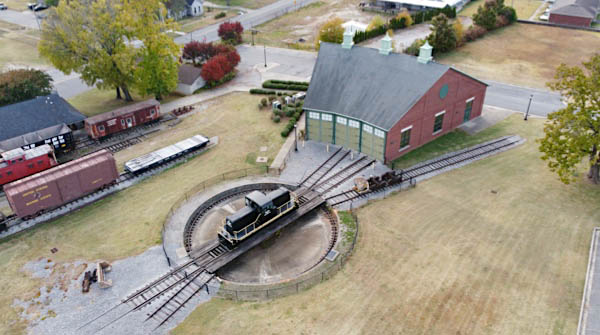
Tuscumbia, Al / Oct 2022 / RWH
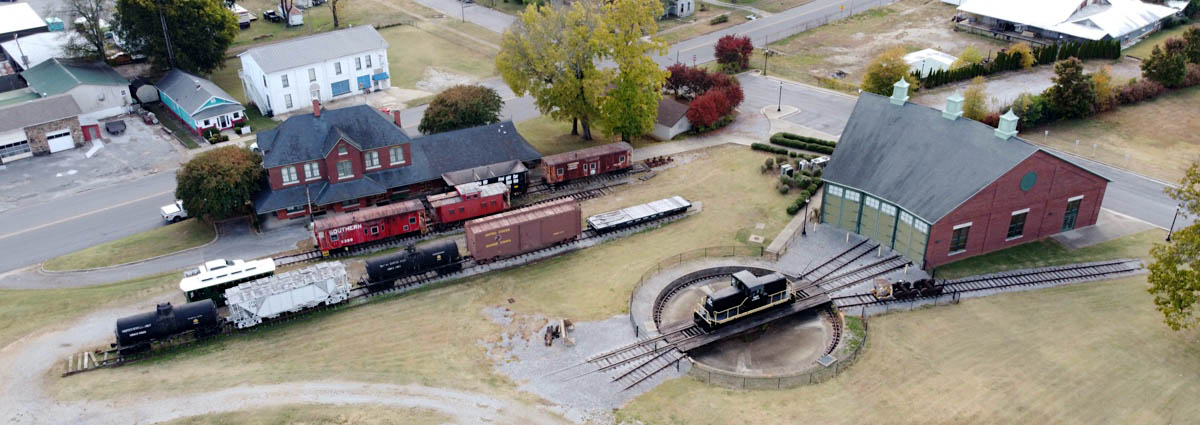
Tuscumbia, Al / Oct 2022 / RWH
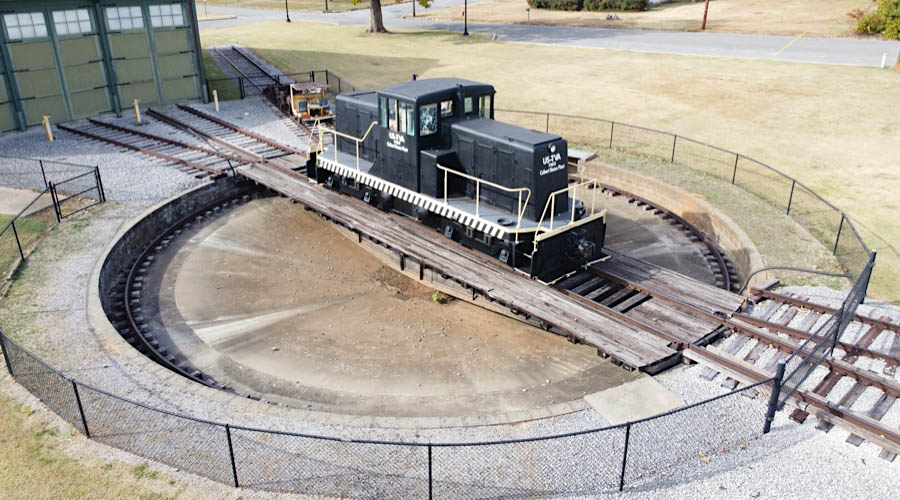
Tuscumbia, Al / Oct 2022 / RWH
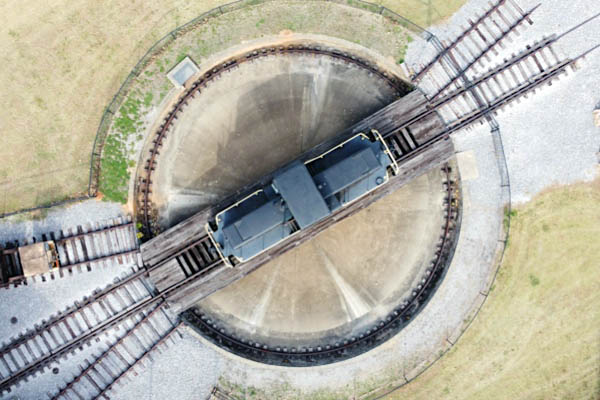
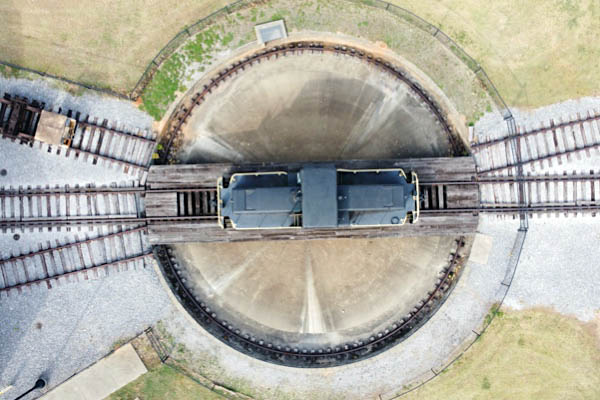
Oct 2022 / RWH

Tuscumbia, Al / Oct 2022 / RWH
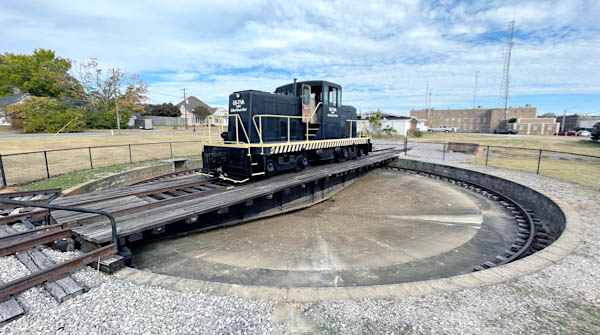
Tuscumbia, Al / Oct 2022 / RWH
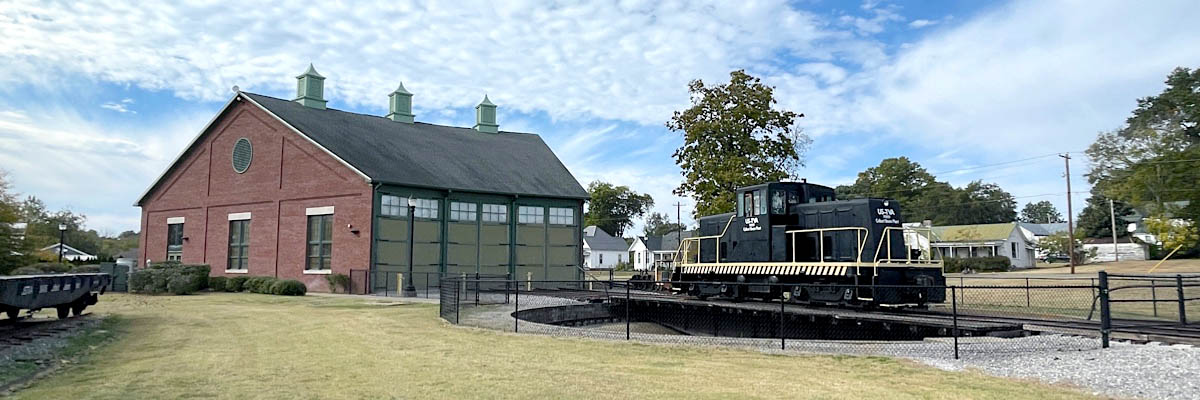
Tuscumbia, Al / Oct 2022 / RWH
Equipment
Tennessee Valley Authority #F2021

Tuscumbia, Al / Oct 2022 / RWH
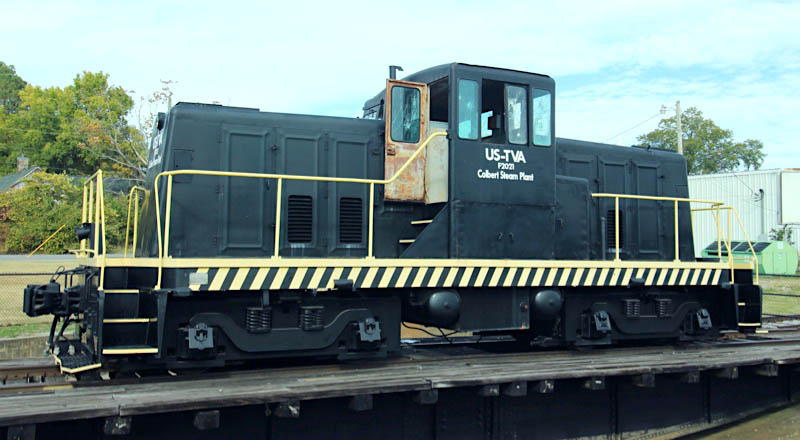
Tennessee Valley Authority #F2021
Tuscumbia, Al / Oct 2022 / RWH


Tennessee Valley Authority #F2021
retired from Colbert Steam Plant

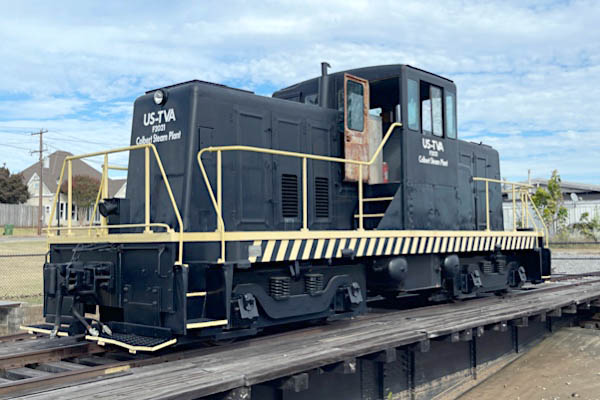
Tuscumbia, Al / Oct 2022 / RWH
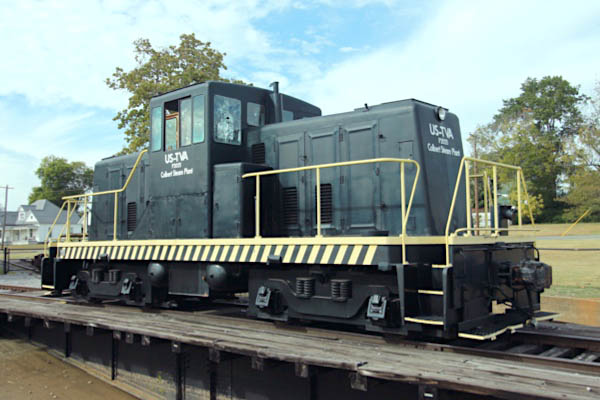
Tuscumbia, Al / Oct 2022 / RWH
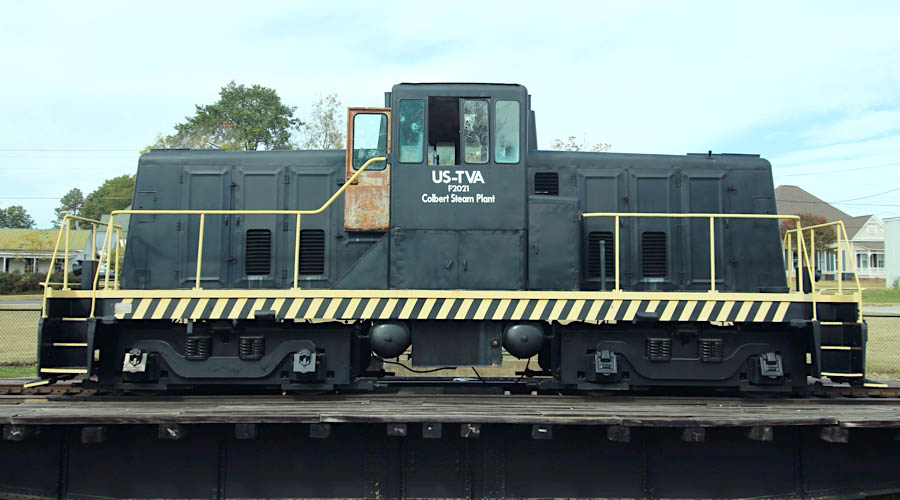
Tuscumbia, Al / Oct 2022 / RWH
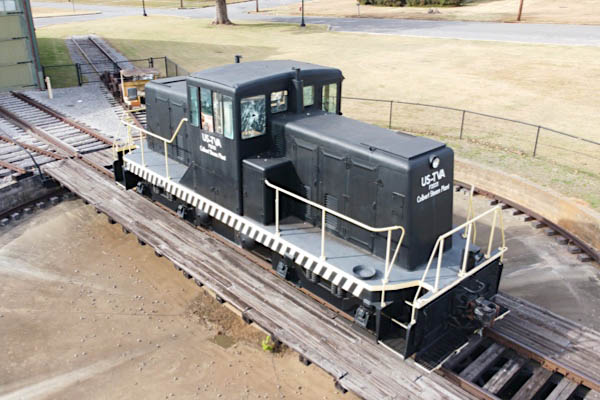
Tuscumbia, Al / Oct 2022 / RWH
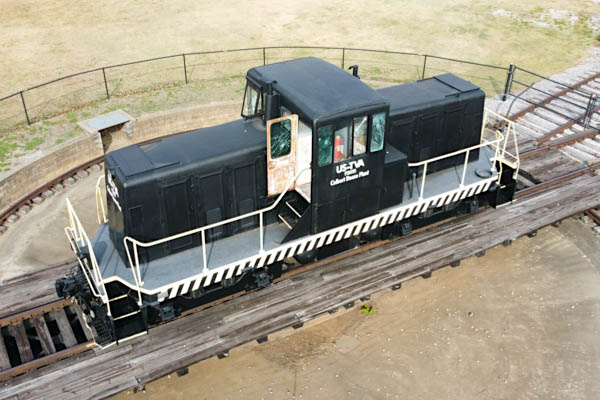
Tuscumbia, Al / Oct 2022 / RWH
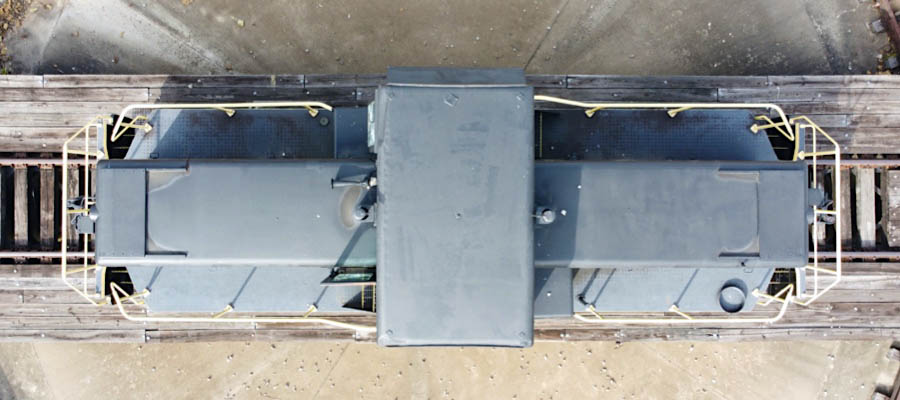
Oct 2022 / RWH

Oct 2022 / RWH

Tuscumbia, Al / Oct 2022 / RWH
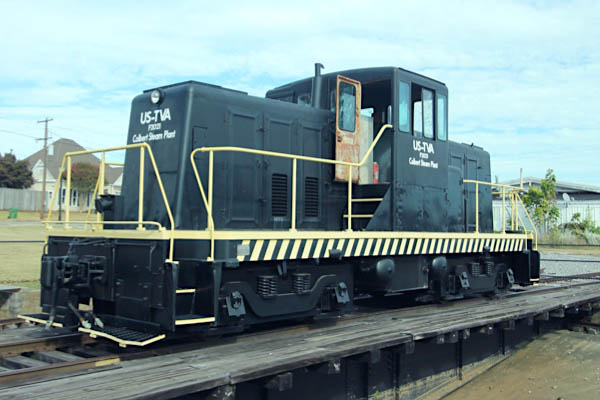
Tuscumbia, Al / Oct 2022 / RWH
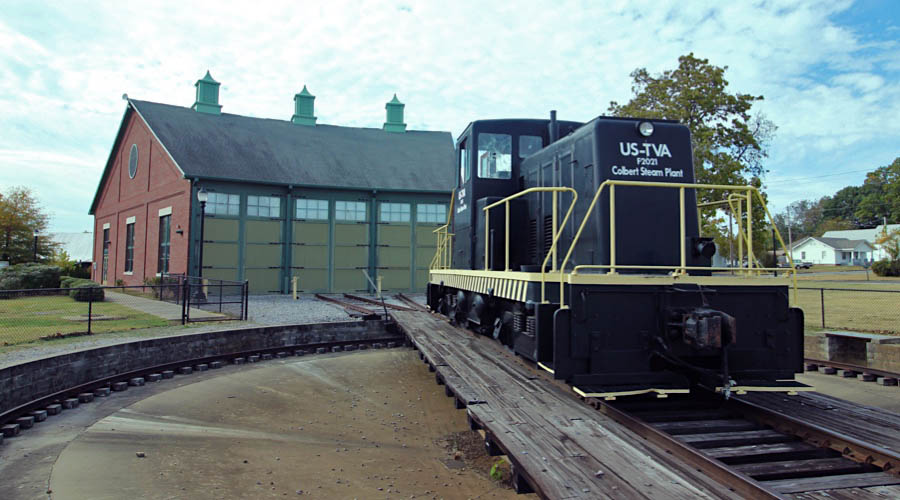
Tuscumbia, Al / Oct 2022 / RWH
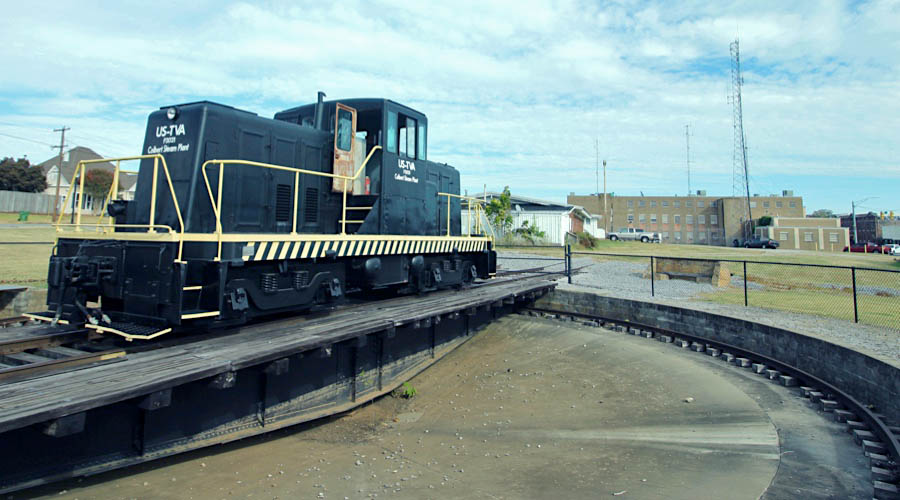
Tuscumbia, Al / Oct 2022 / RWH
Rolling Stock
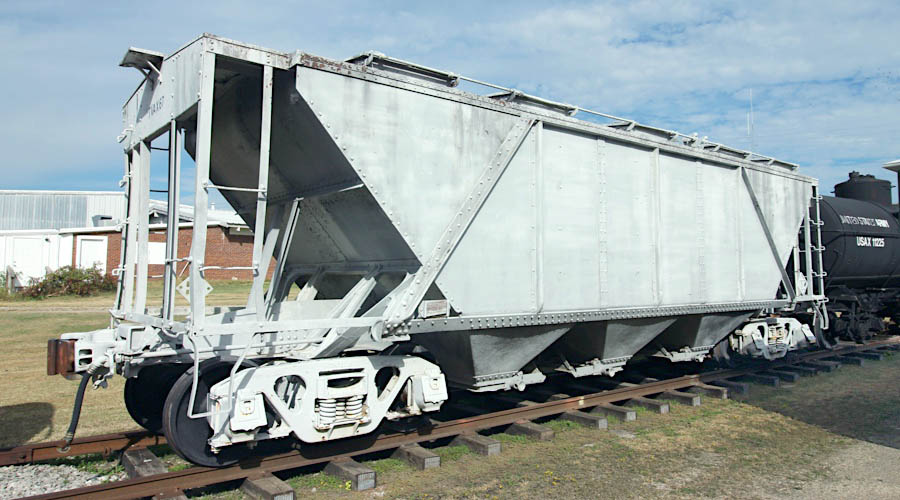
Tennessee Valley Authority #67
covered hopper / Tuscumbia, Al / Oct 2022 / RWH
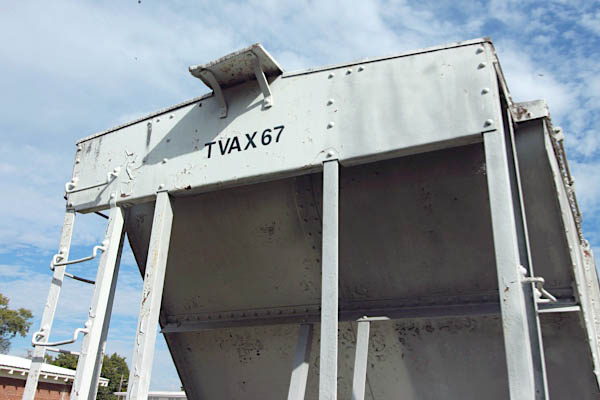
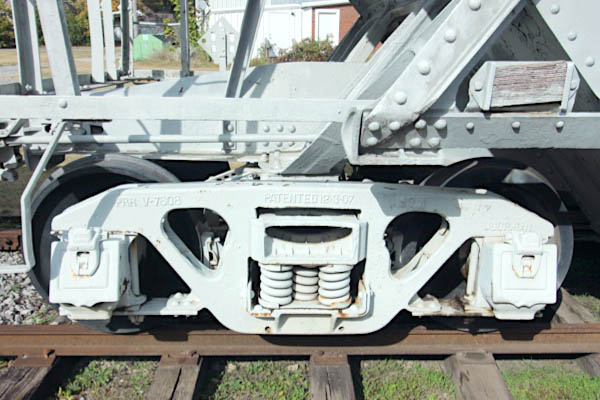

Oct 2022 / RWH
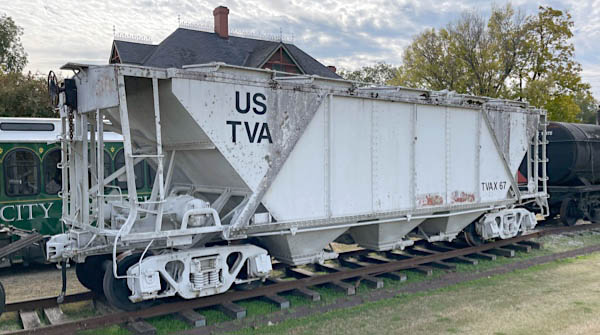
Tuscumbia, Al / Oct 2022 / RWH
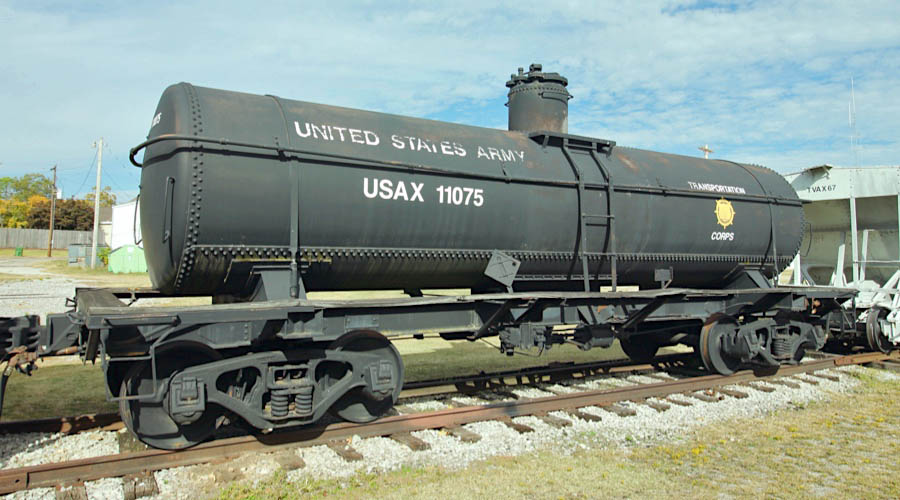
United States Army #11075
tank car / Tuscumbia, Al / Oct 2022 / RWH
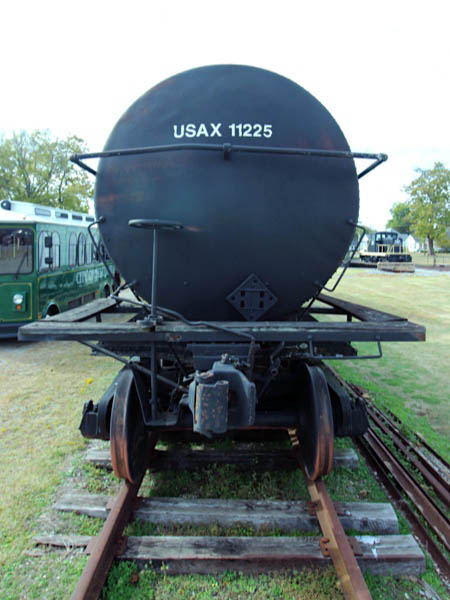
Oct 2022 / RWH

Tuscumbia, Al / Oct 2022 / RWH
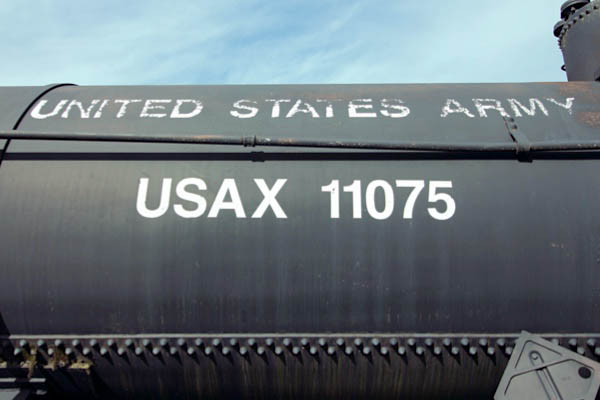
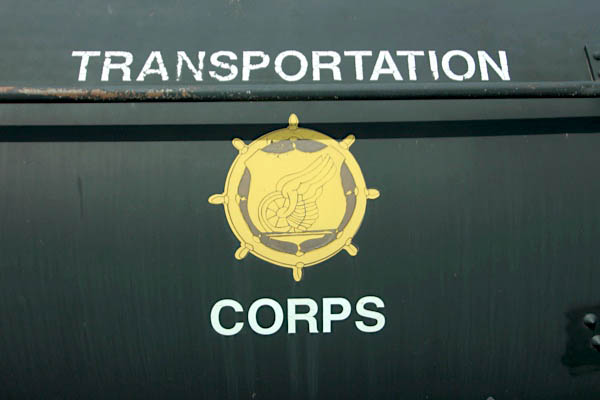

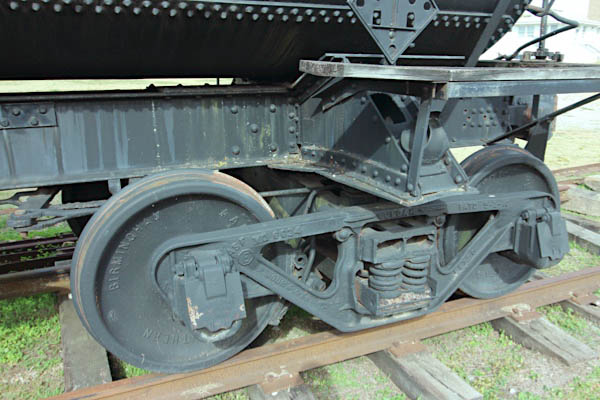
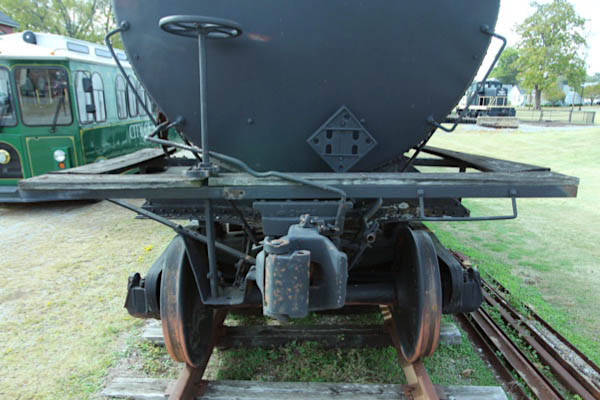
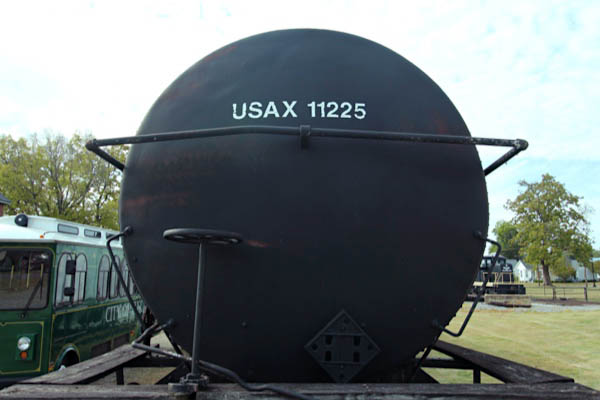
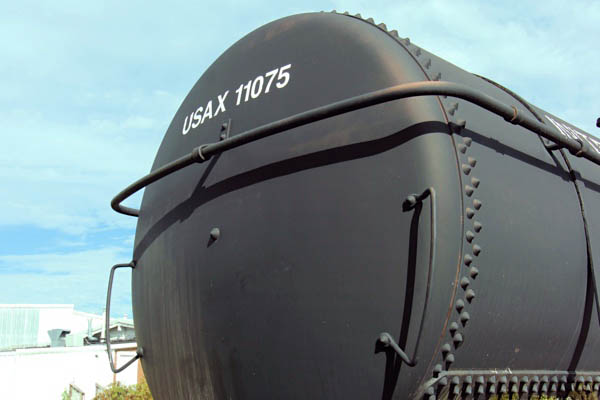


Oct 2022 / RWH

Tuscumbia, Al / Oct 2022 / RWH
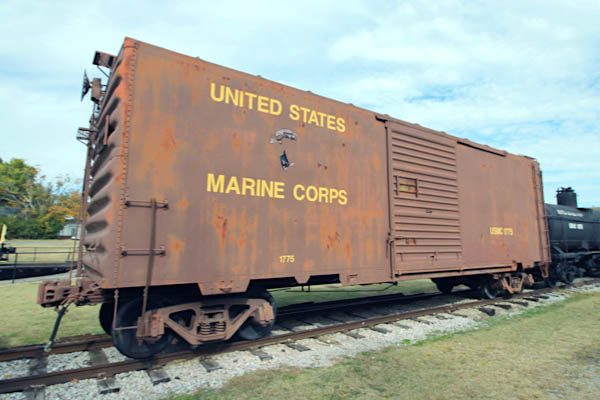
"United States Marine Corp #1775"
commemorative boxcar / Tuscumbia, Al / Oct 2022 / RWH
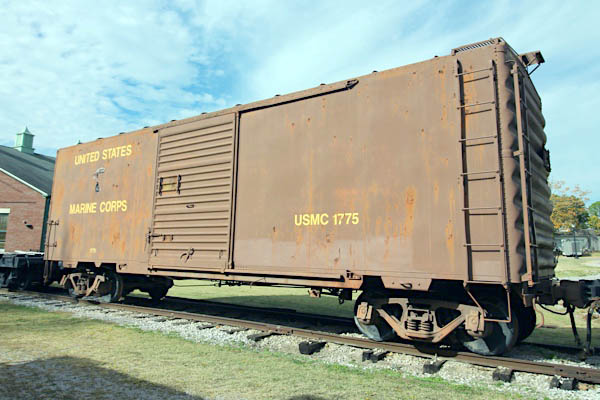
Tuscumbia, Al / Oct 2022 / RWH
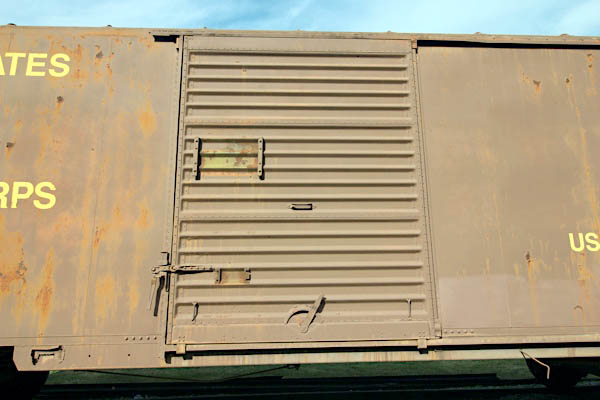
Oct 2022 / RWH
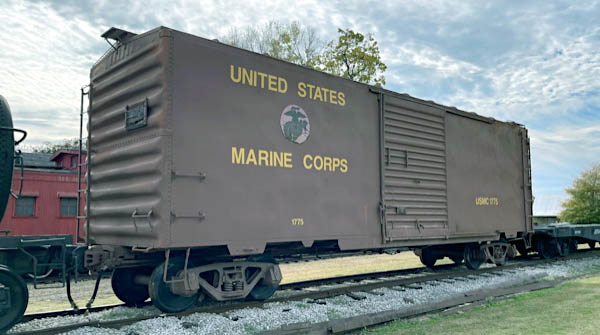
Tuscumbia, Al / Oct 2022 / RWH

Tennessee Valley Authority #180406
flat car / Tuscumbia, Al / Oct 2022 / RWH
 Beautiful Bays
Beautiful Bays
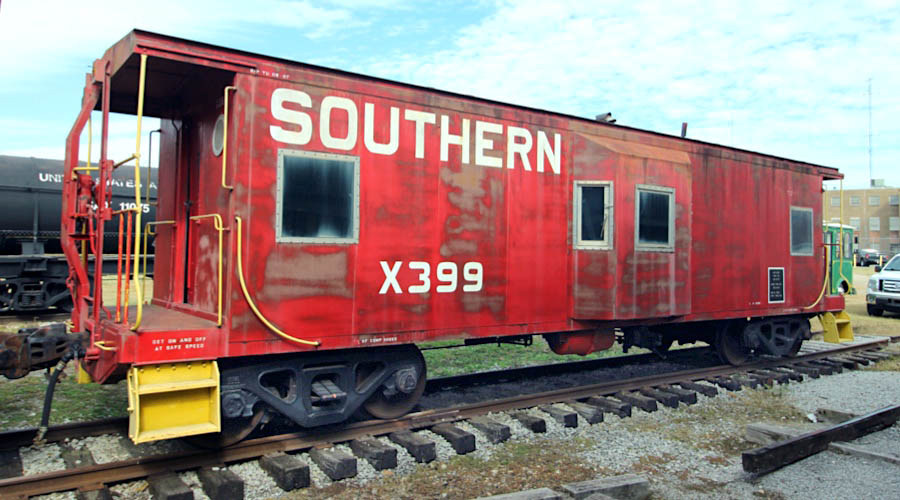
Southern Railway #X399
Tuscumbia, Al / Oct 2022 / RWH
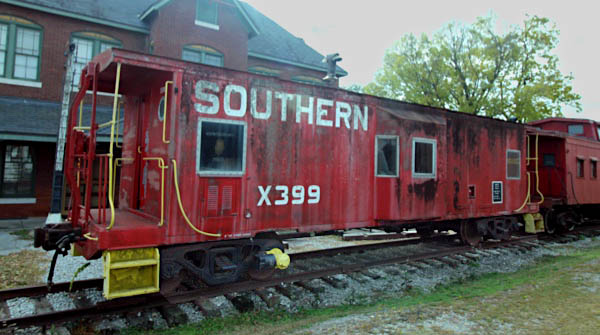
Tuscumbia, Al / Oct 2022 / RWH
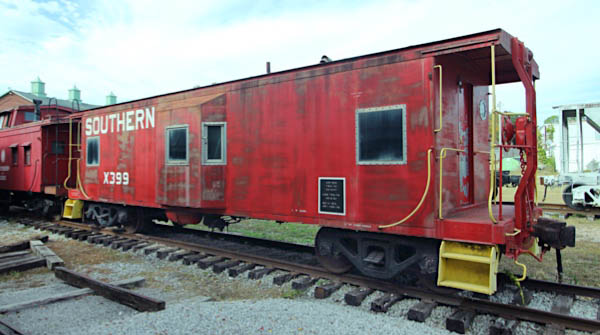
Tuscumbia, Al / Oct 2022 / RWH
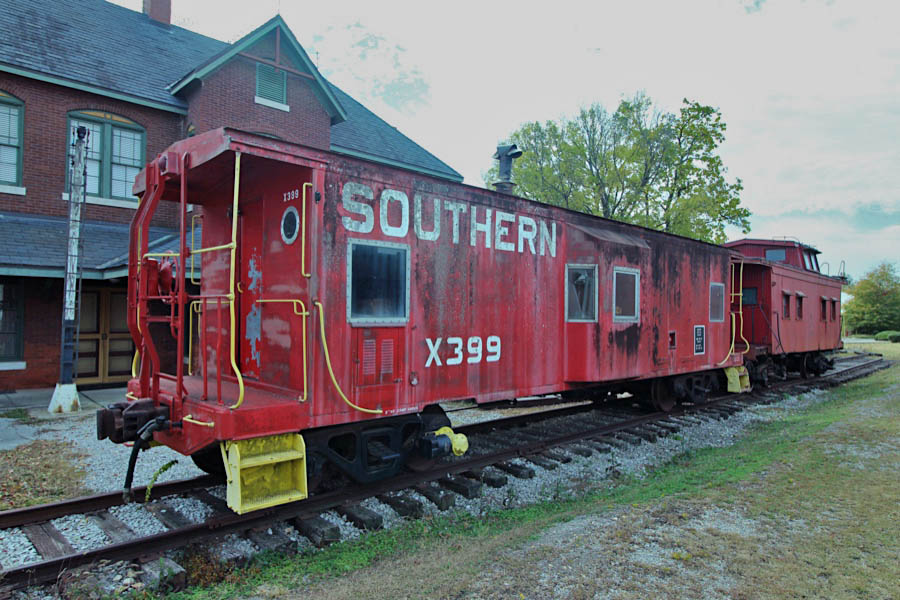
Tuscumbia, Al / Oct 2022 / RWH
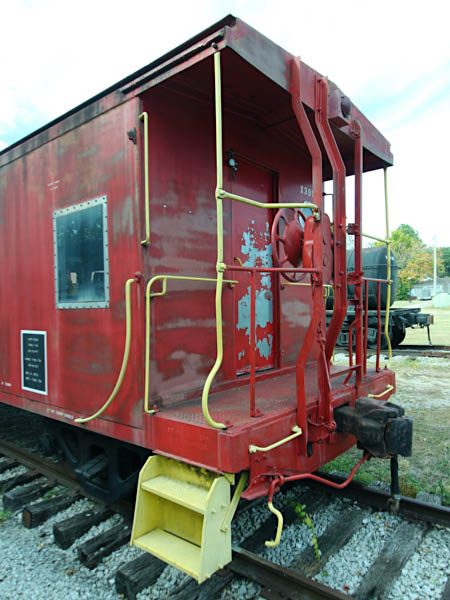
Oct 2022 / RWH
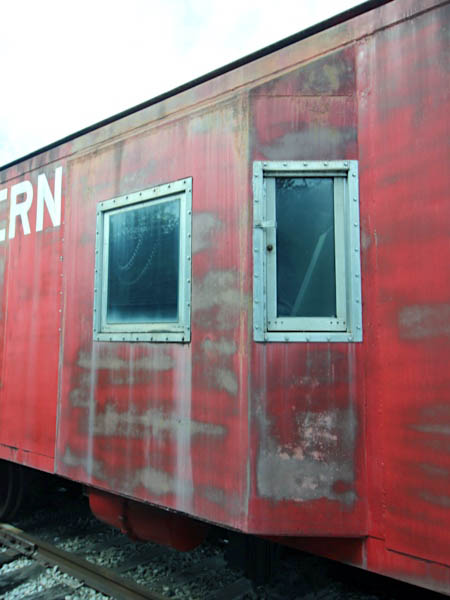

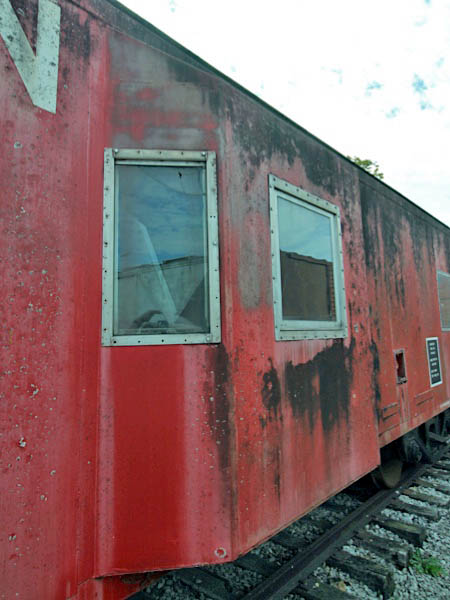
Oct 2022 / RWH
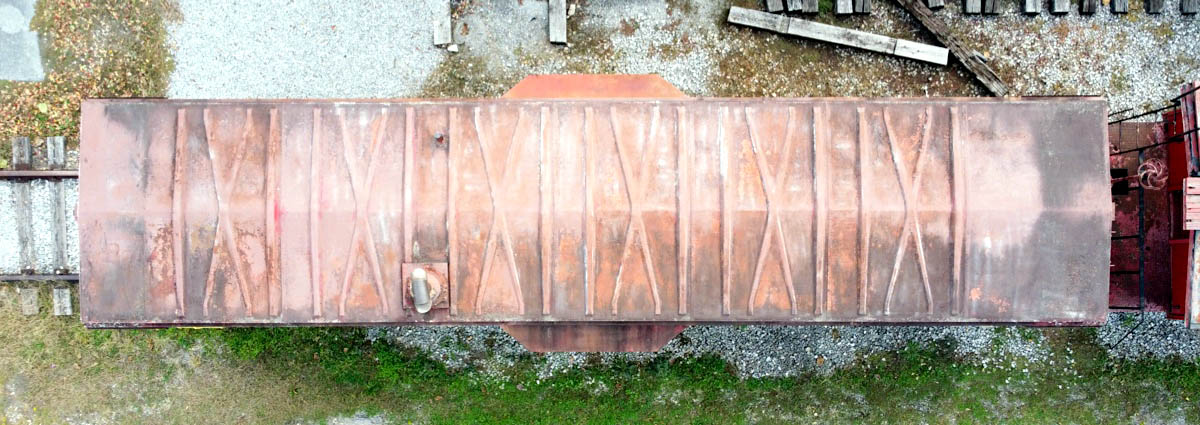
Oct 2022 / RWH
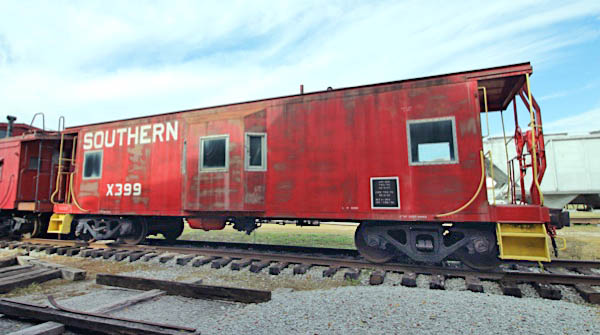
Oct 2022 / RWH
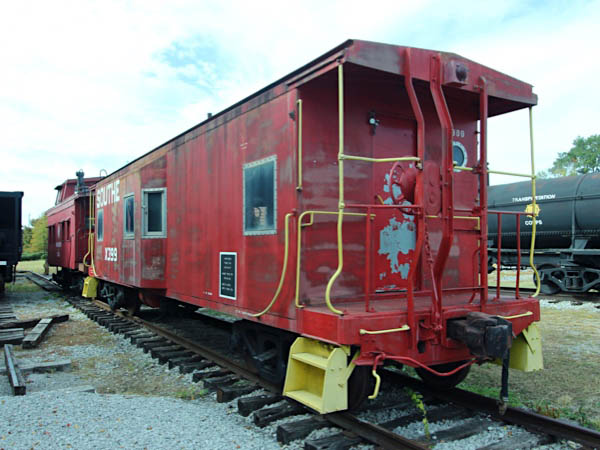
Oct 2022 / RWH


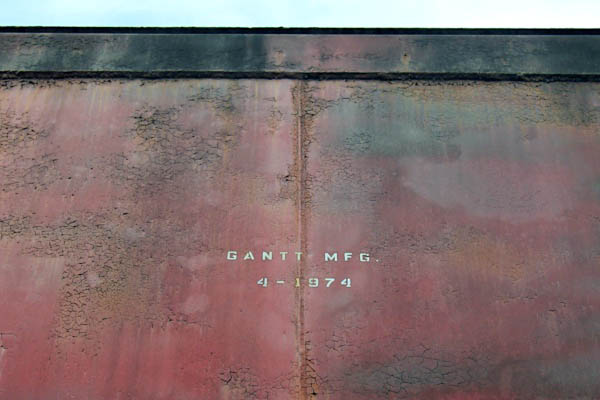
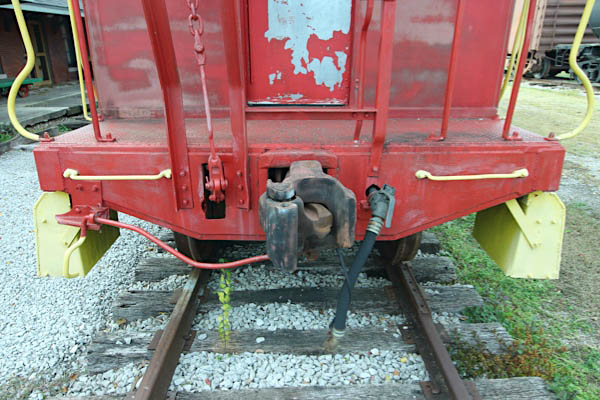
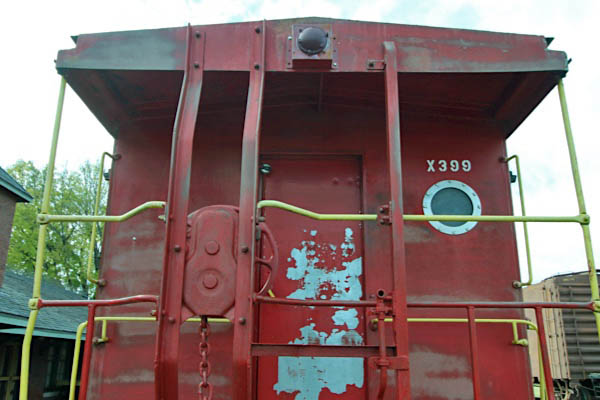
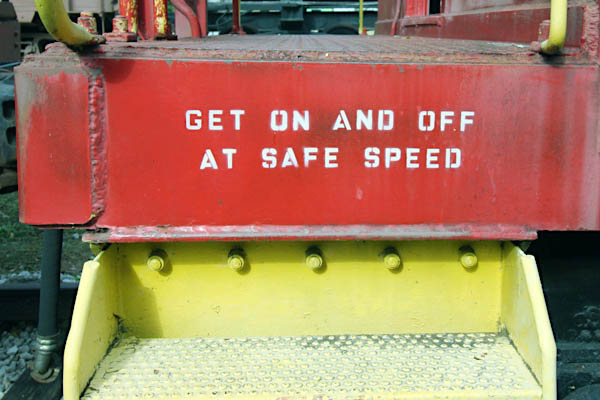
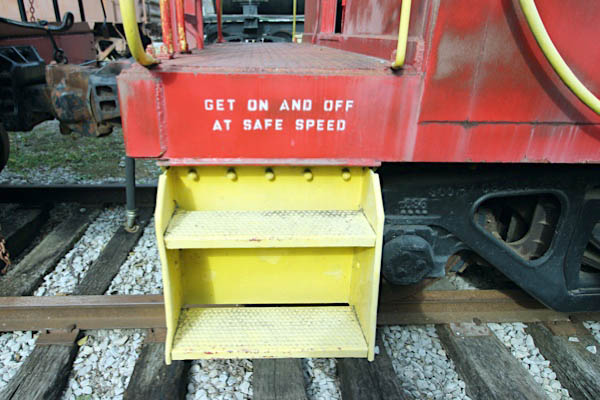

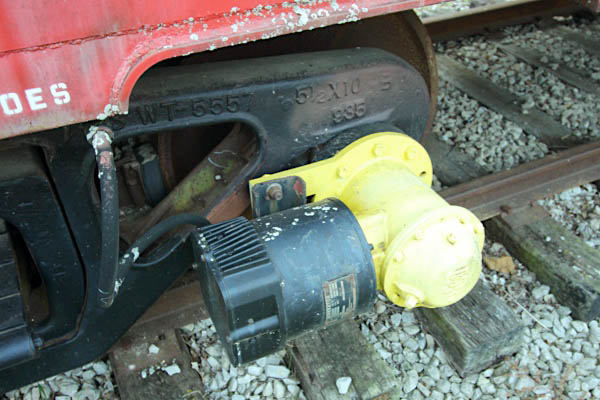
Oct 2022 / RWH
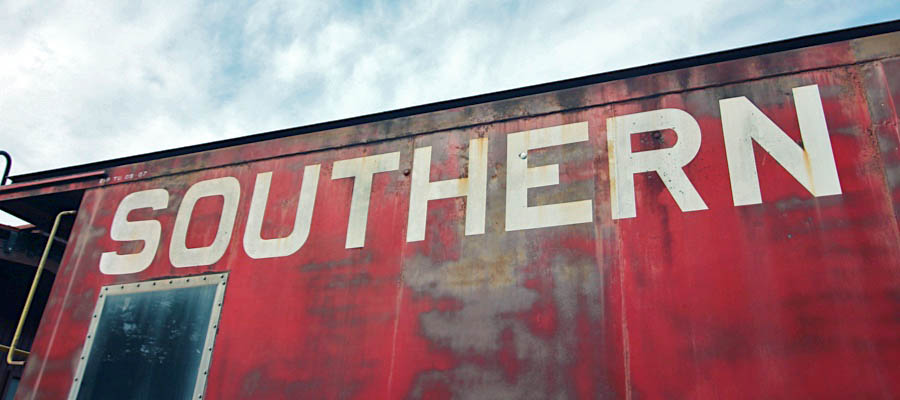
Tuscumbia, Al / Oct 2022 / RWH
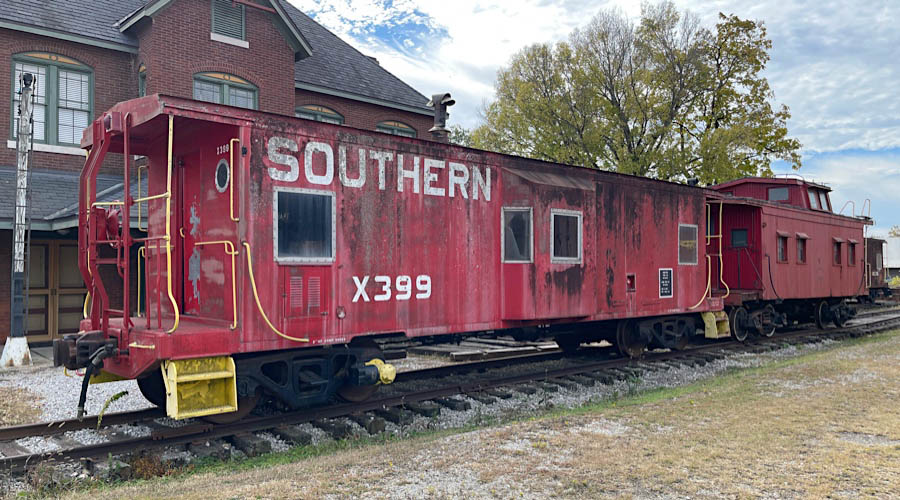
Tuscumbia, Al / Oct 2022 / RWH
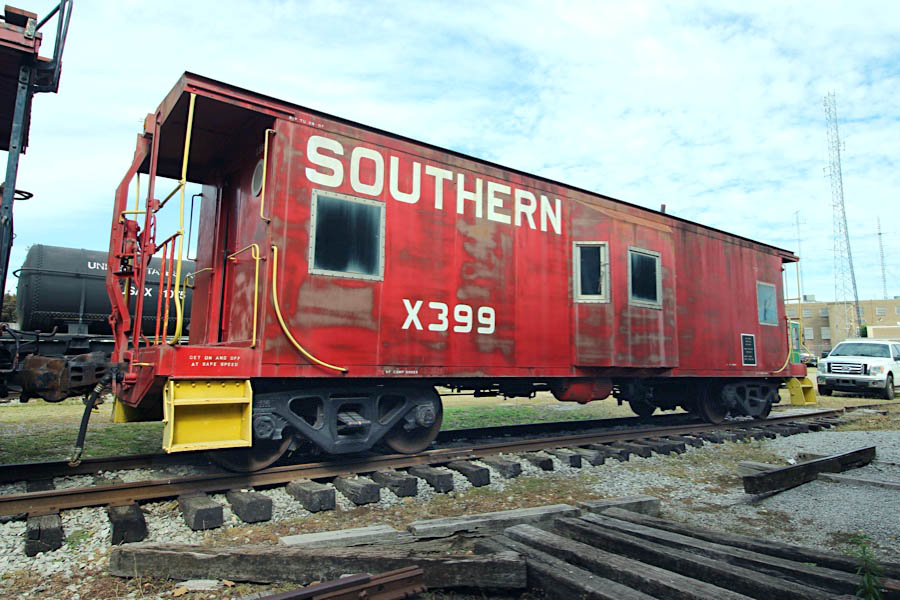
Tuscumbia, Al / Oct 2022 / RWH
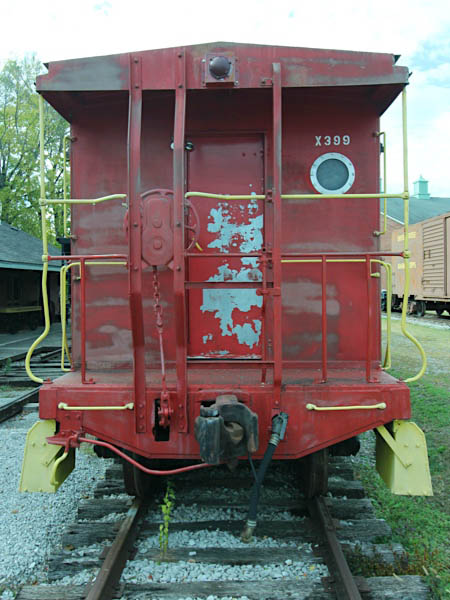
Oct 2022 / RWH

Tuscumbia Railway #315
Tuscumbia, Al / Oct 2022 / RWH
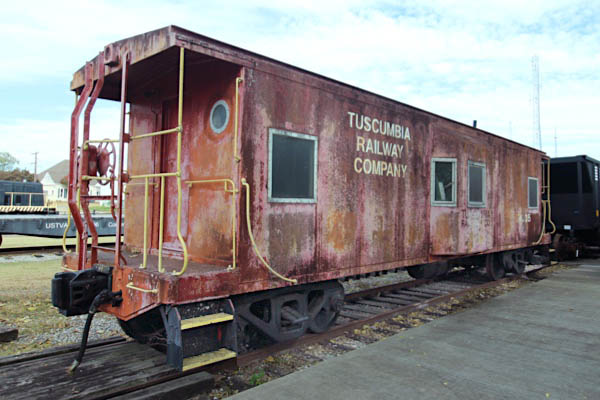
Tuscumbia, Al / Oct 2022 / RWH
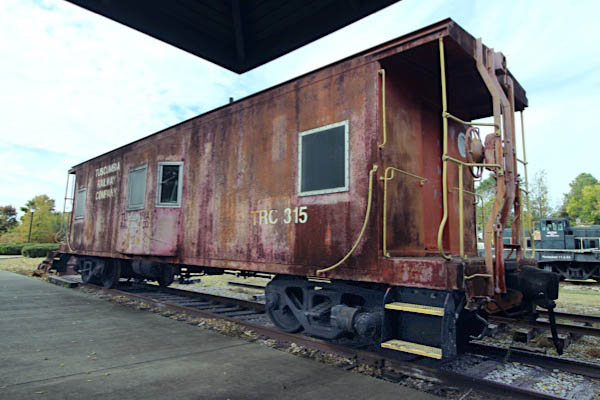
Tuscumbia, Al / Oct 2022 / RWH
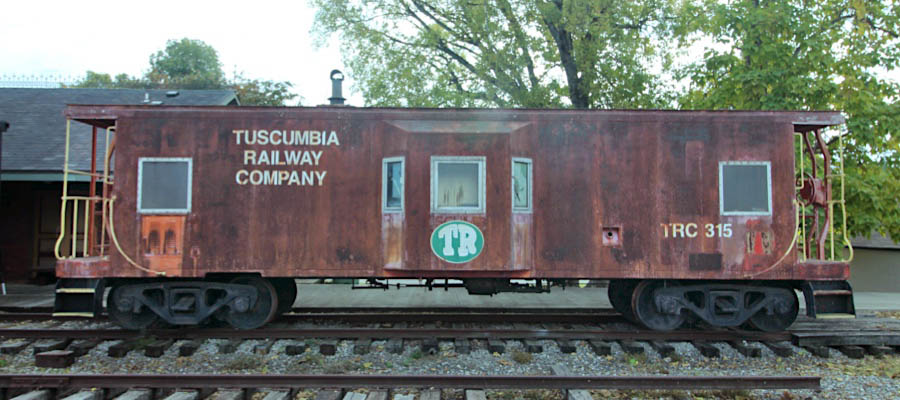
Tuscumbia, Al / Oct 2022 / RWH
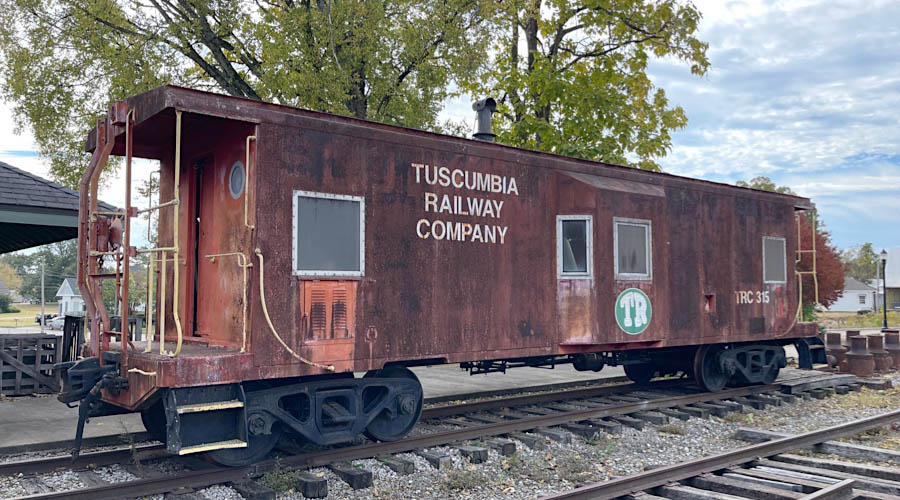
Tuscumbia, Al / Oct 2022 / RWH
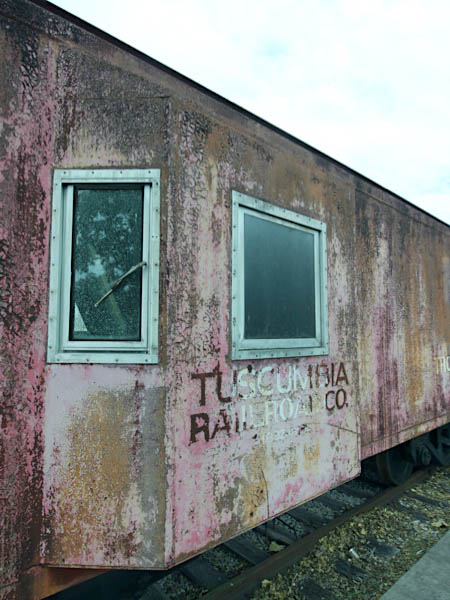
Oct 2022 / RWH
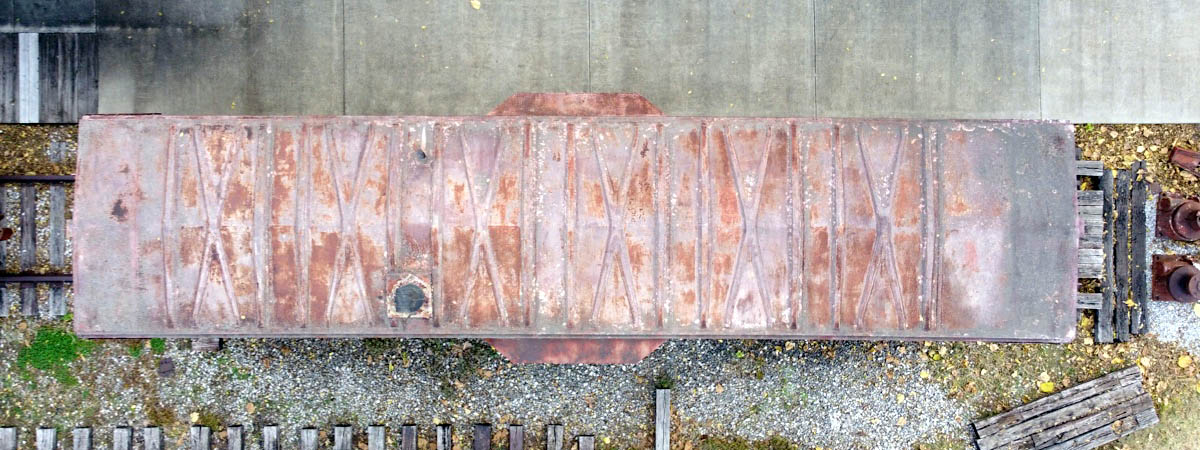
Oct 2022 / RWH



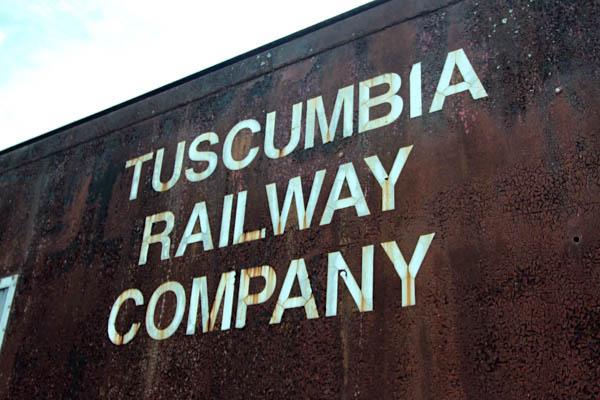
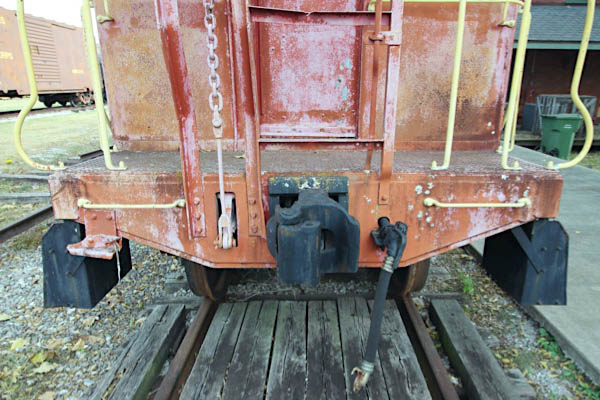

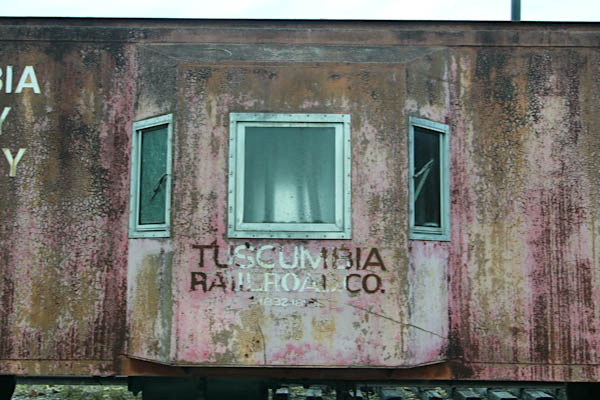
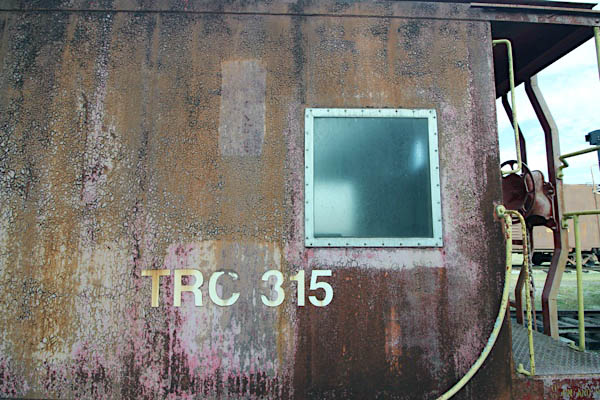
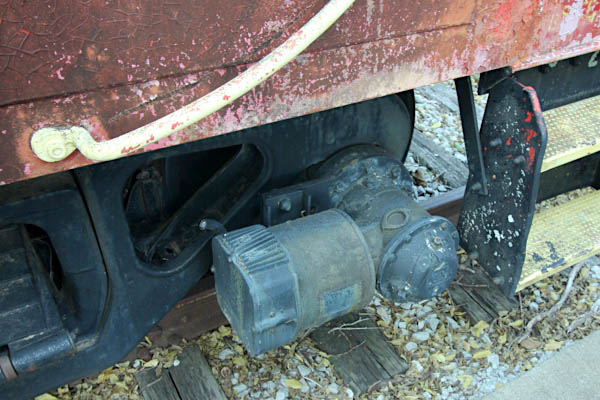
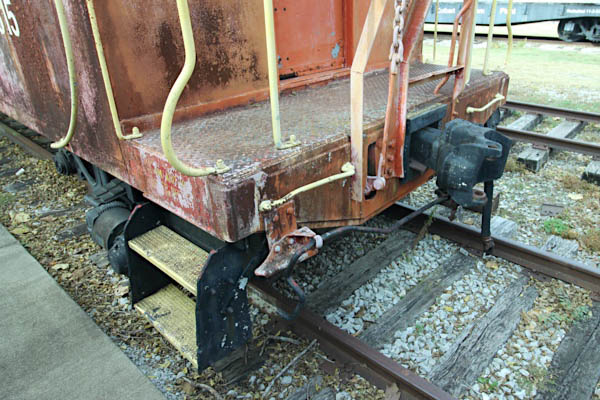
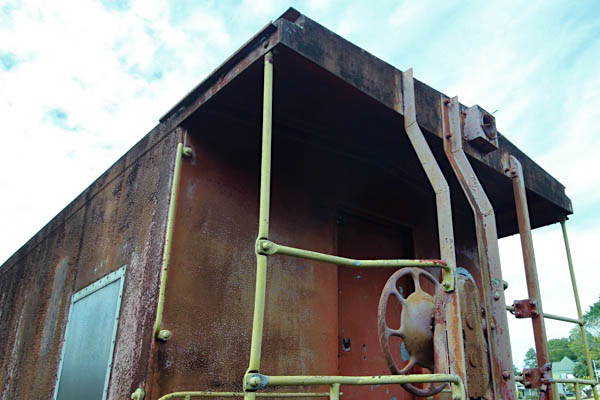
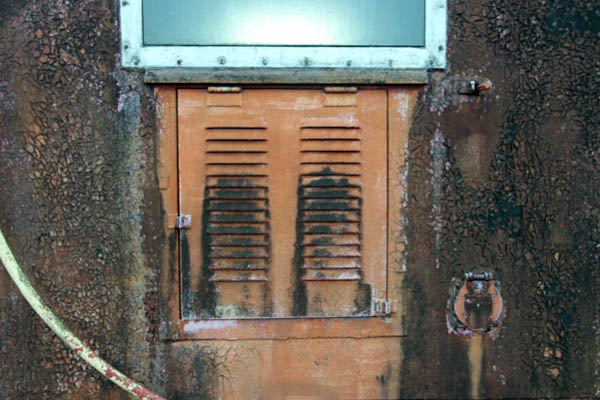
Oct 2022 / RWH

Tuscumbia, Al / Oct 2022 / RWH
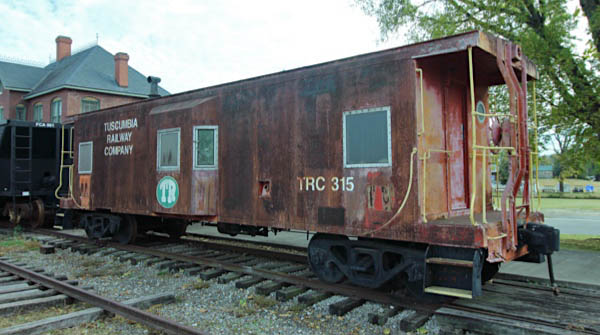
Tuscumbia, Al / Oct 2022 / RWH
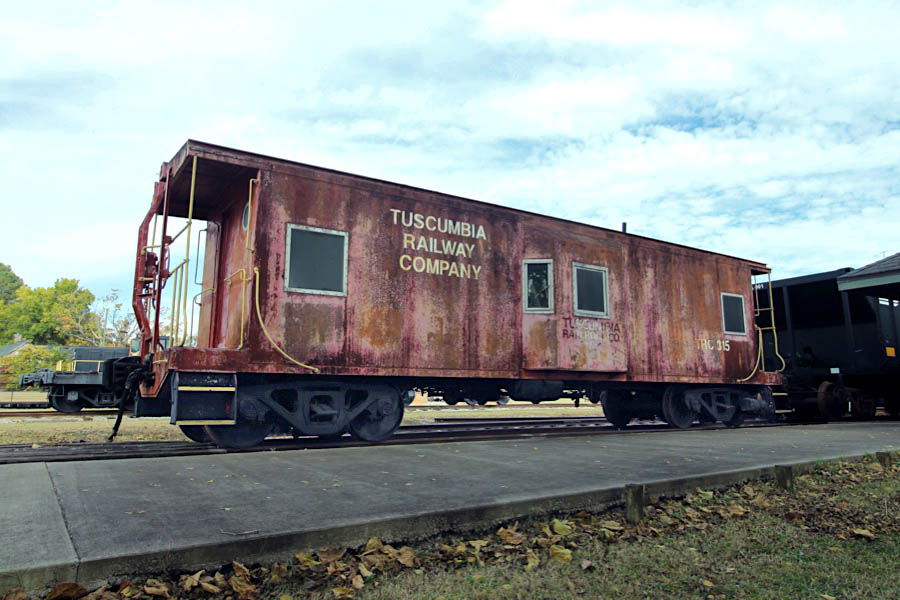
Tuscumbia, Al / Oct 2022 / RWH

Oct 2022 / RWH

See also our complete Southern Railway Bay Window Survivors scrapbook in Mainlines
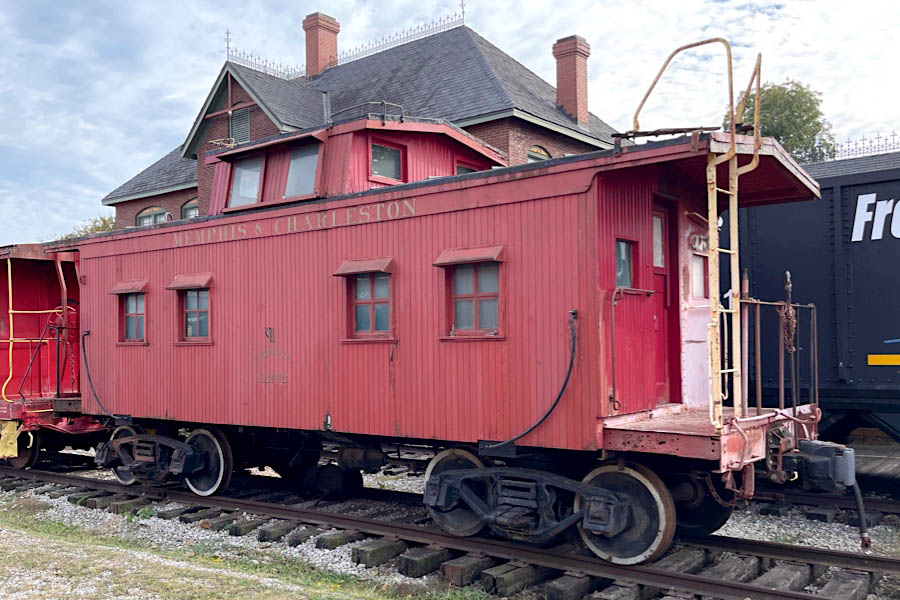
Southern Railway #X2102
wooden caboose / Tuscumbia, Al / Oct 2022 / RWH
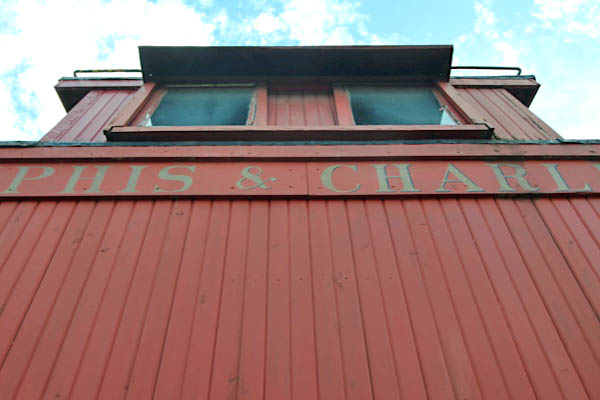
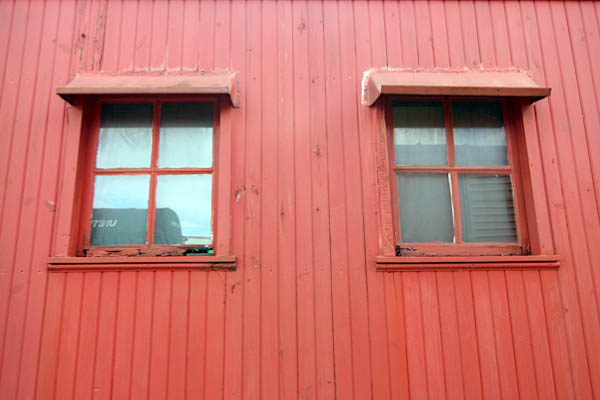
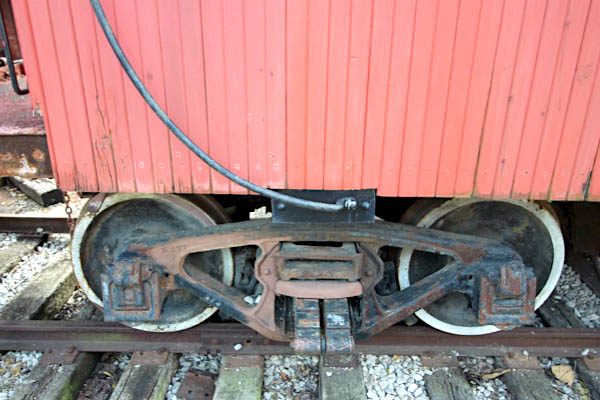
Oct 2022 / RWH
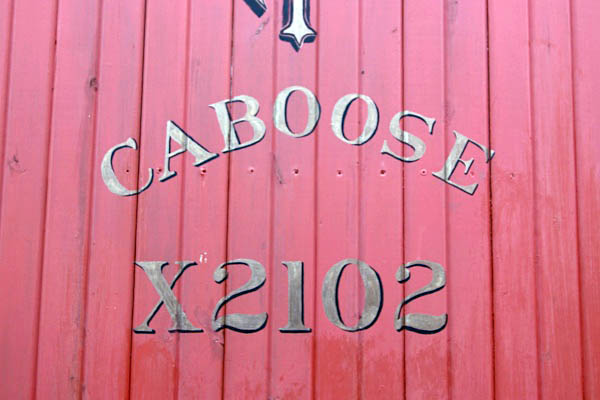
RWH

Tuscumbia, Al / Oct 2022 / RWH

Tuscumbia, Al / Oct 2022 / RWH
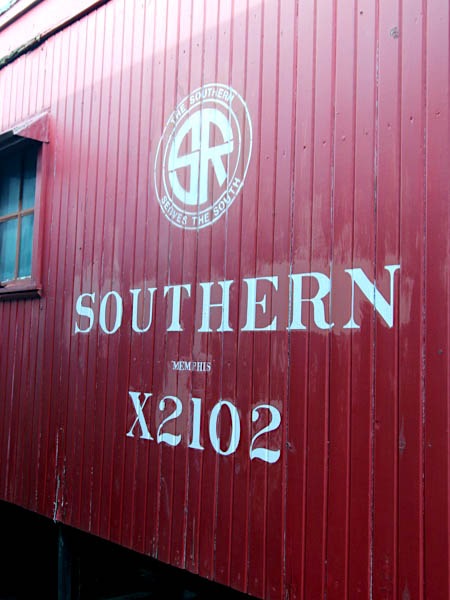
Oct 2022 / RWH
Shoals Model Railroaders
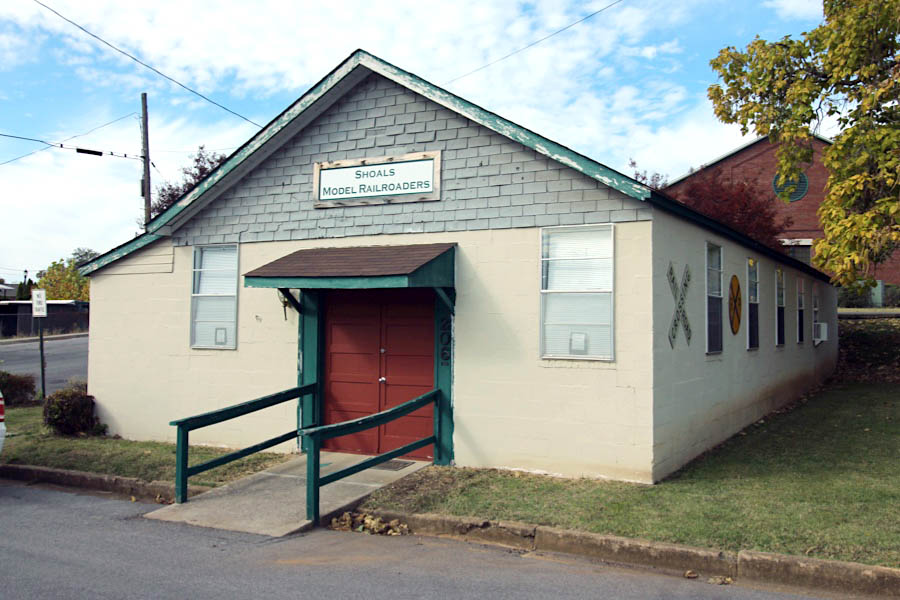
Tuscumbia, Al / Oct 2022 / RWH
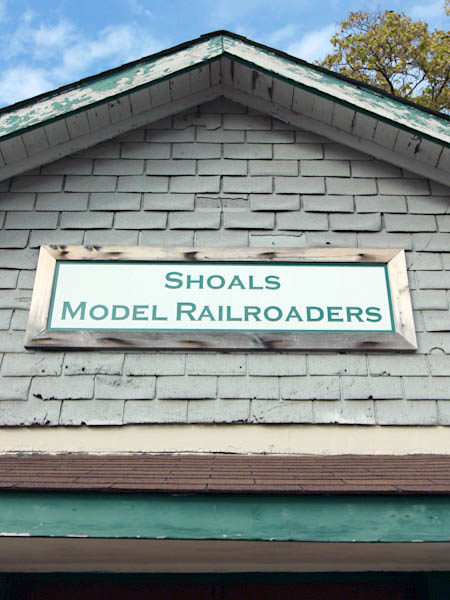
Oct 2022 / RWH
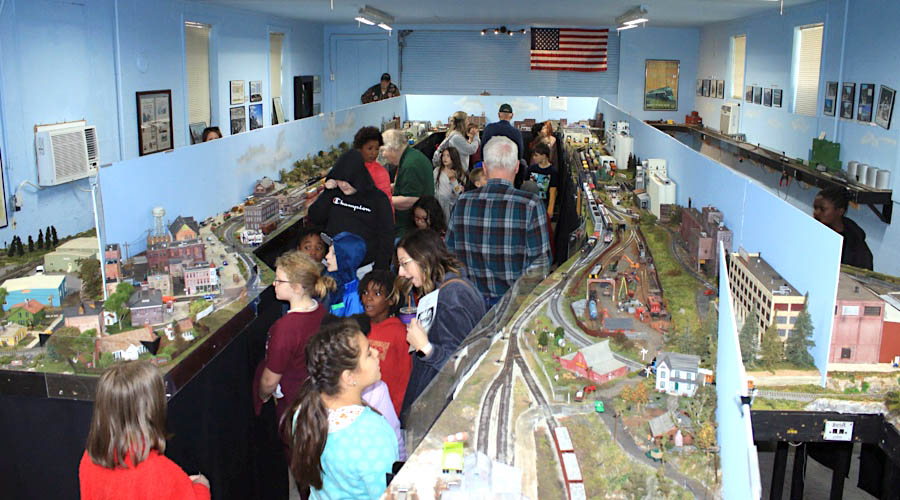
Oct 2022 / Facebook

Check out Shoals Model Railroaders website to learn more about the group
Lagniappe



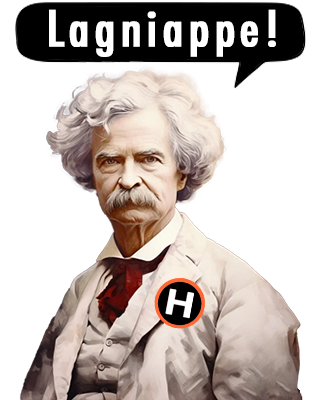
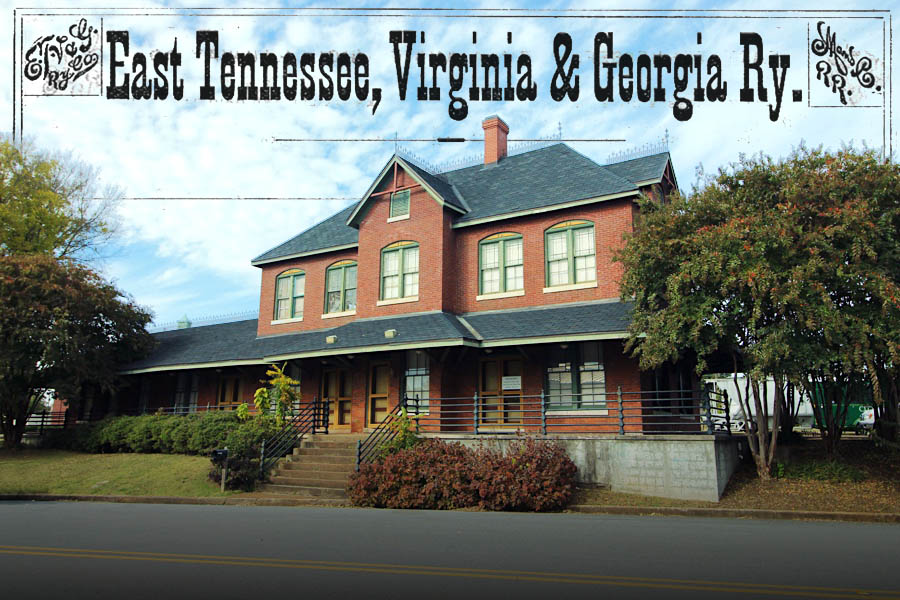
Capital Improvements
Tuscumbia, Al / Oct 2022 / image and artwork RWH
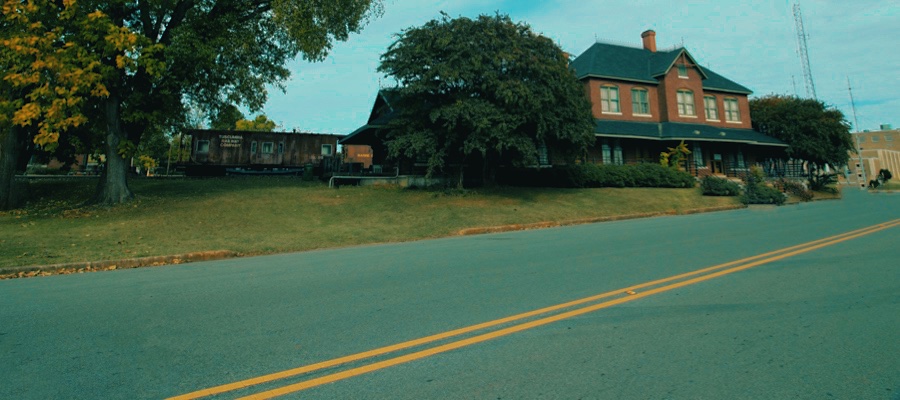
West Fifth Street
Tuscumbia, Al / Oct 2022 / RWH

Afternoon in October
Tuscumbia, Al / Oct 2022 / RWH

Blue Skies, Smilin' on Me
Tuscumbia, Al / Oct 2022 / RWH
Links / Sources
- City of Tuscumbia Attractions page
- Alabama Mountain Lakes Tourist Association Tuscumbia Depot page
- Wikipedia article for Tuscumbia AL

